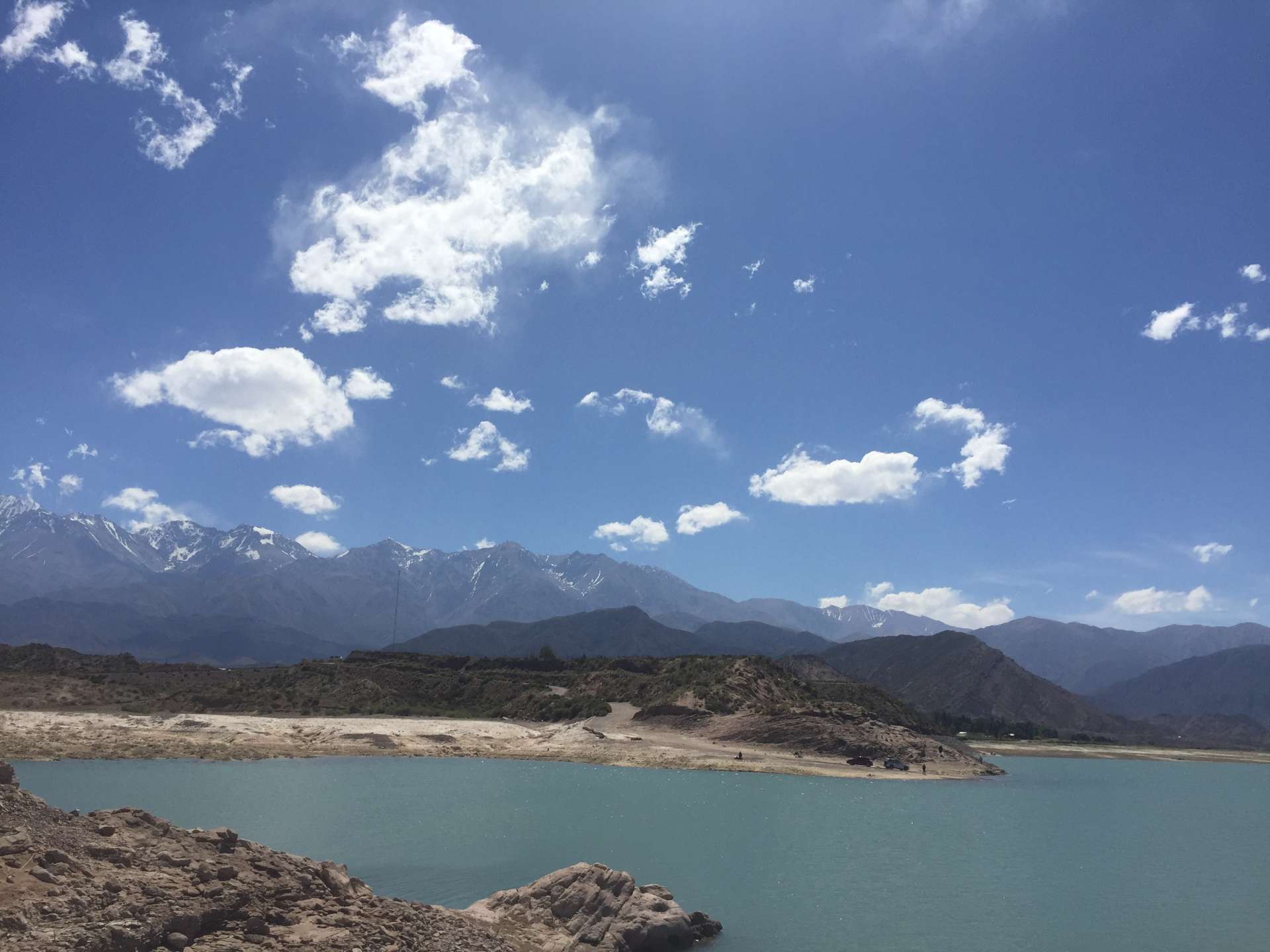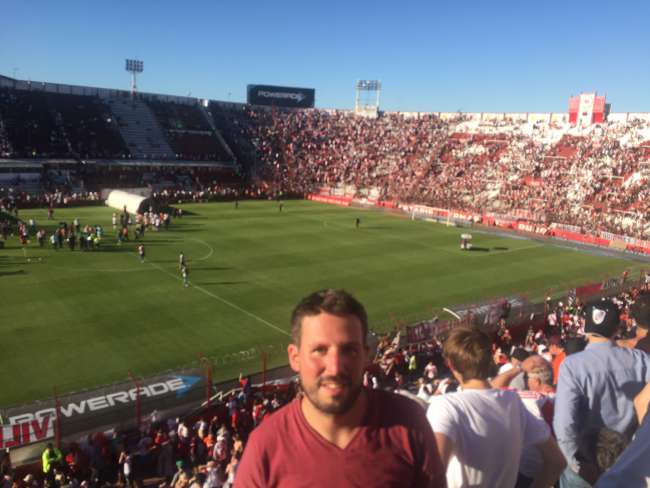Extreme Contrasts - From San Pedro to Uyuni to La Paz
Published: 02.12.2016
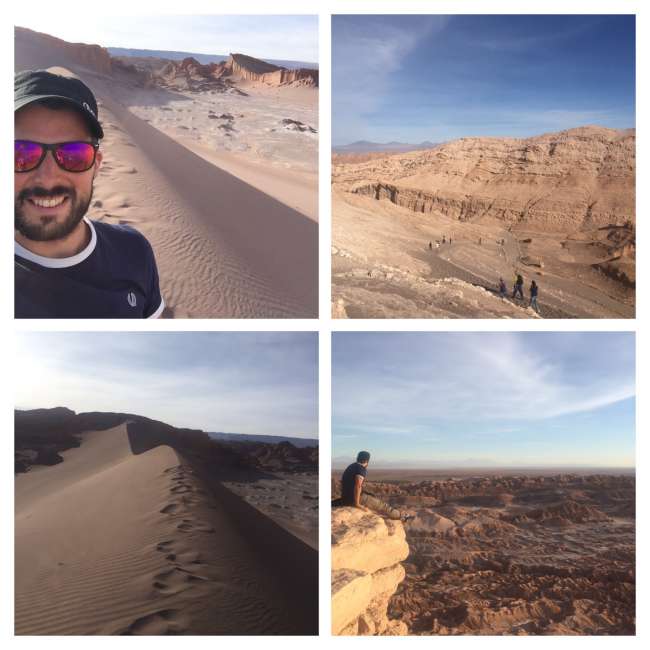
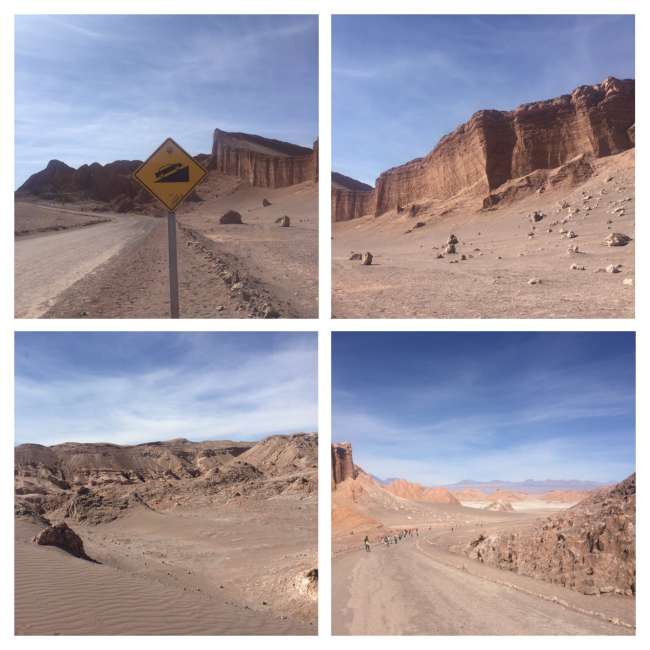
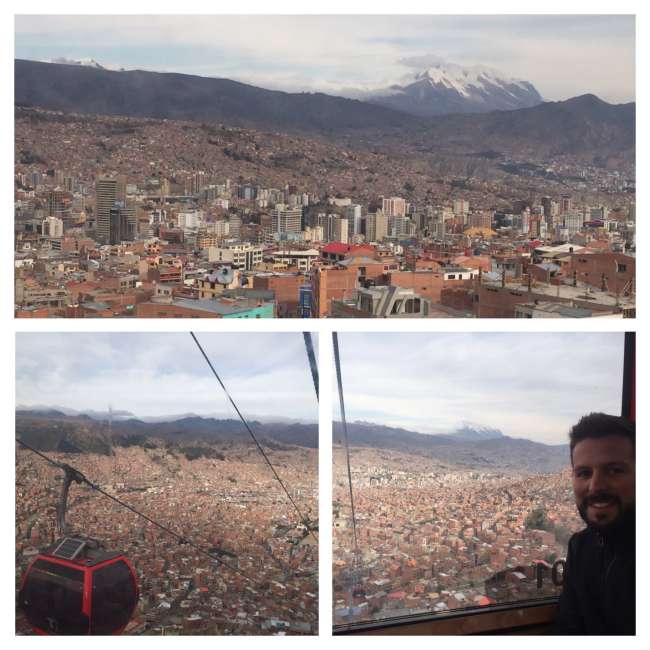
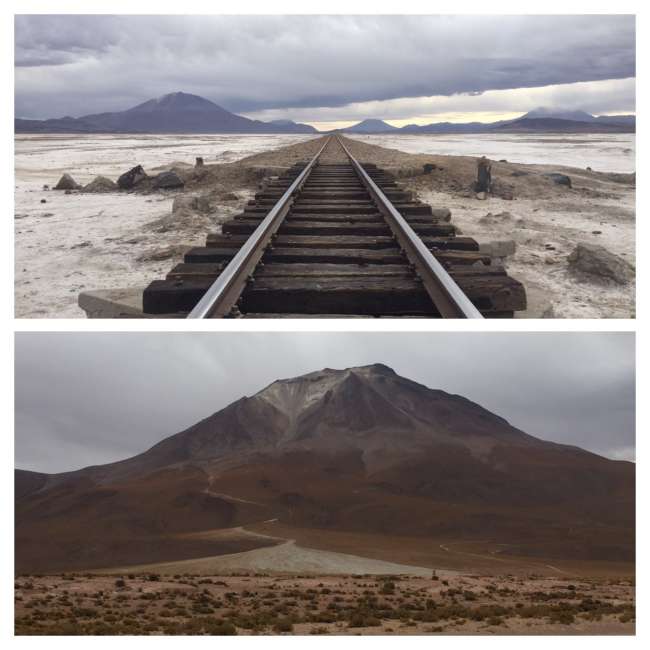
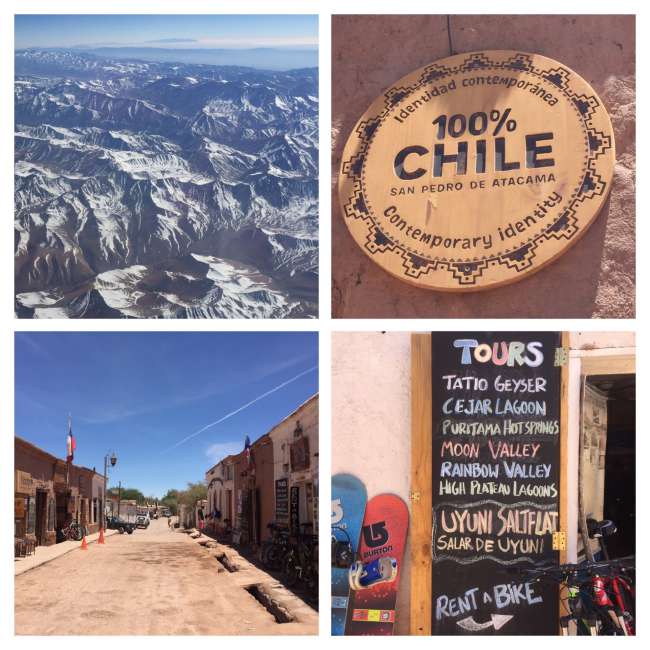
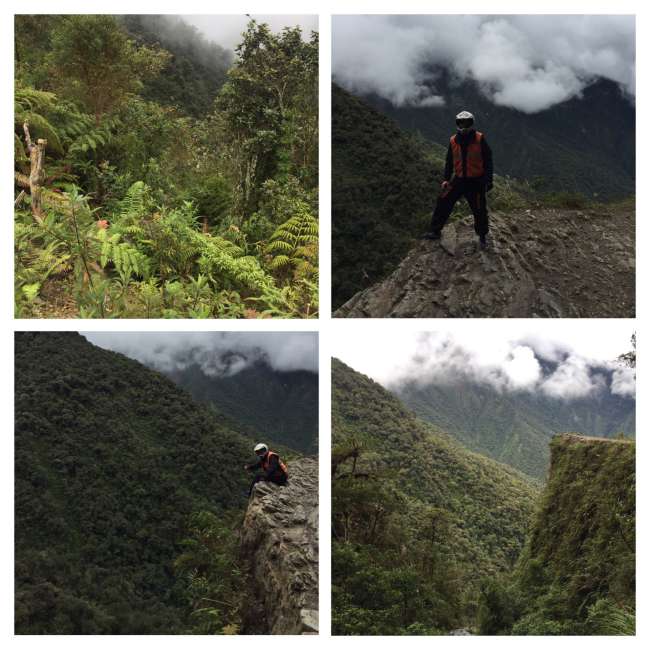
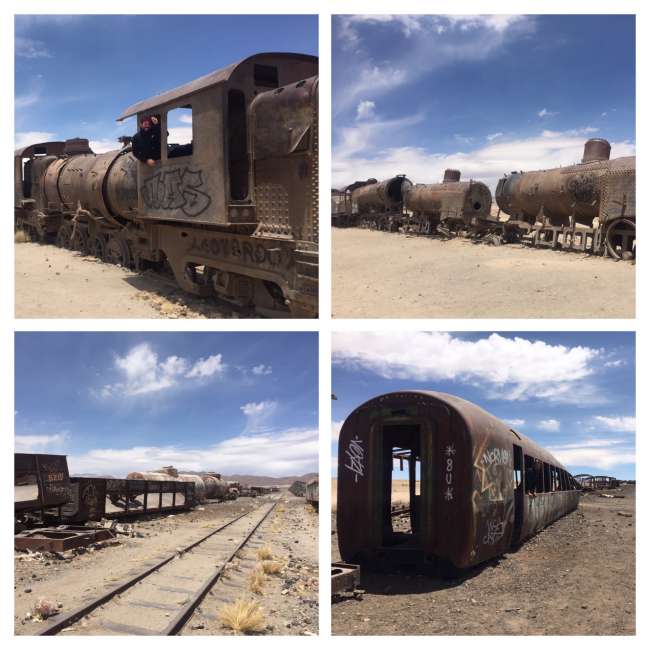
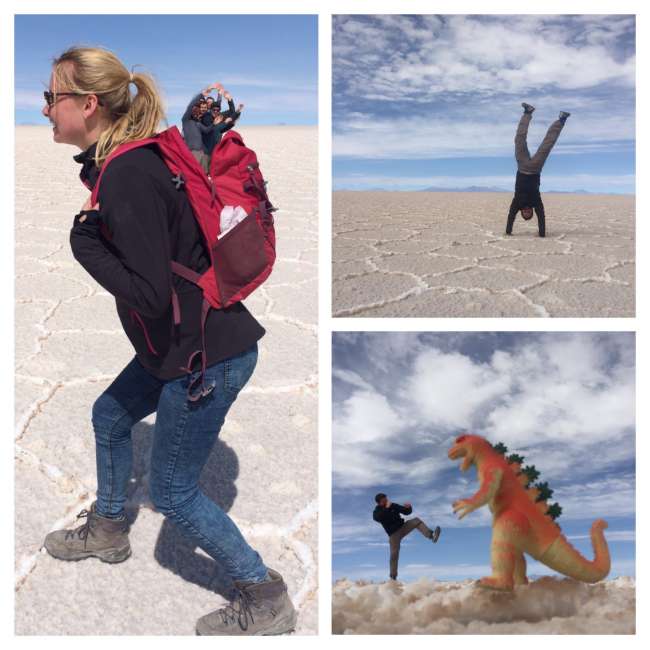
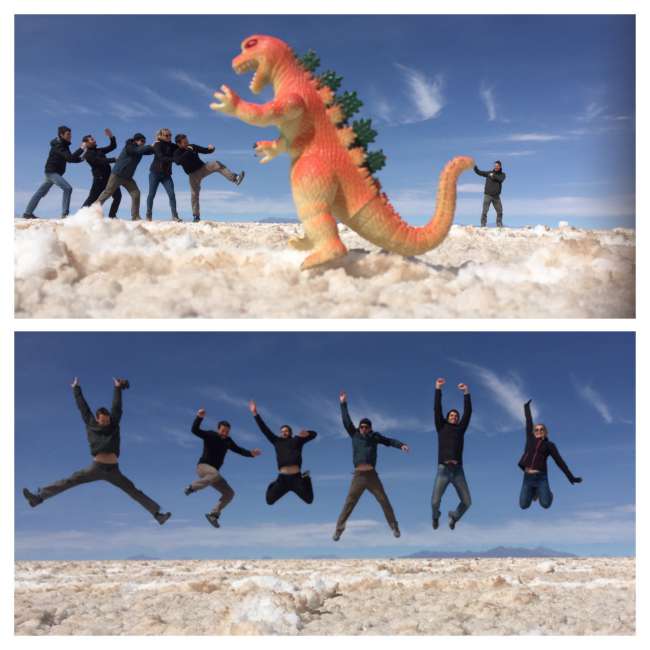
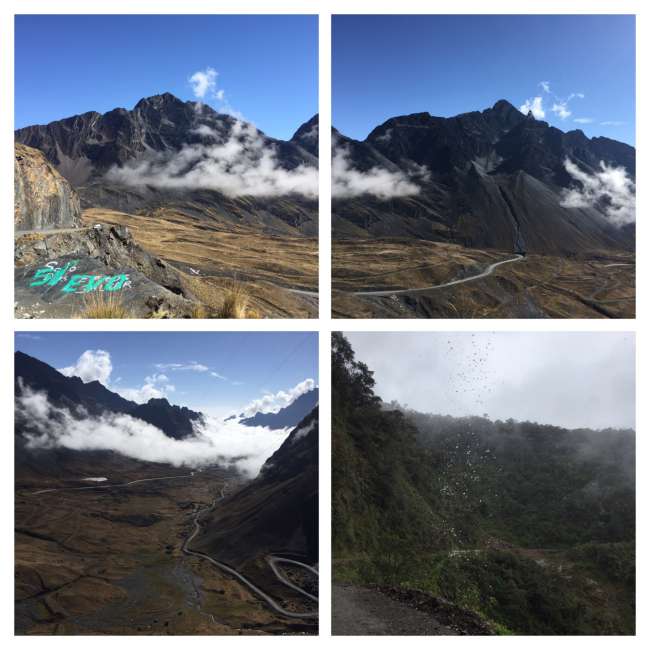
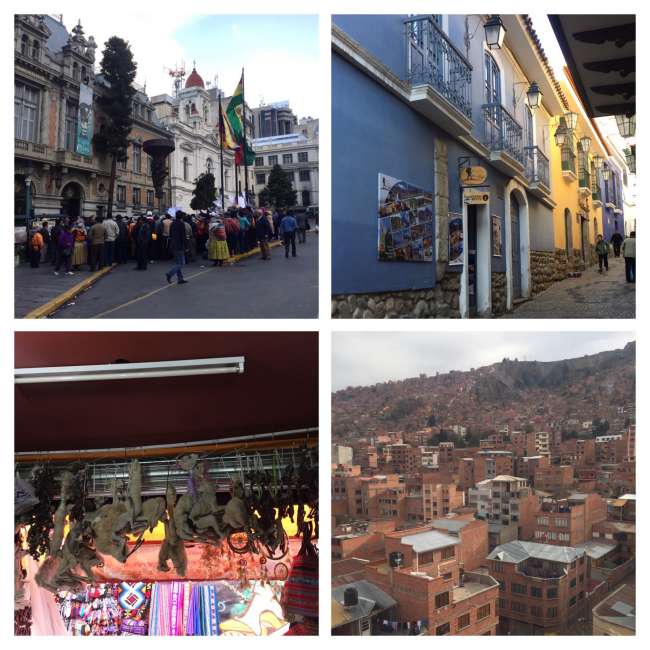
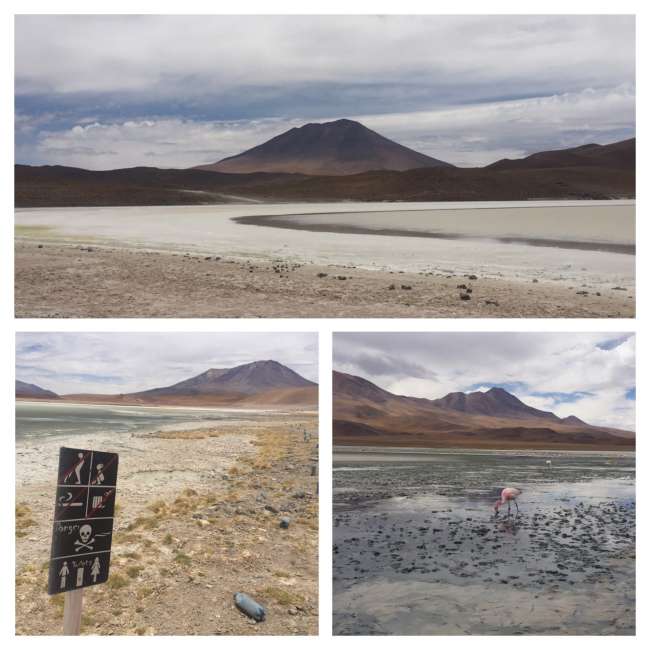
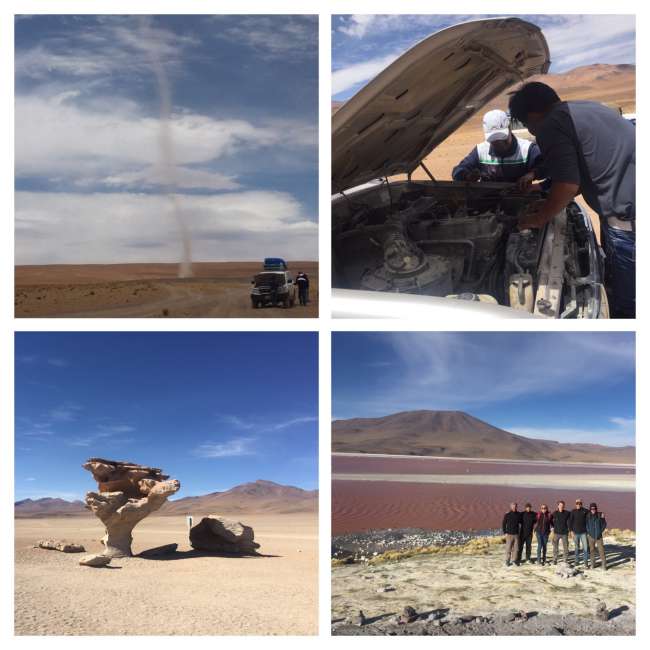
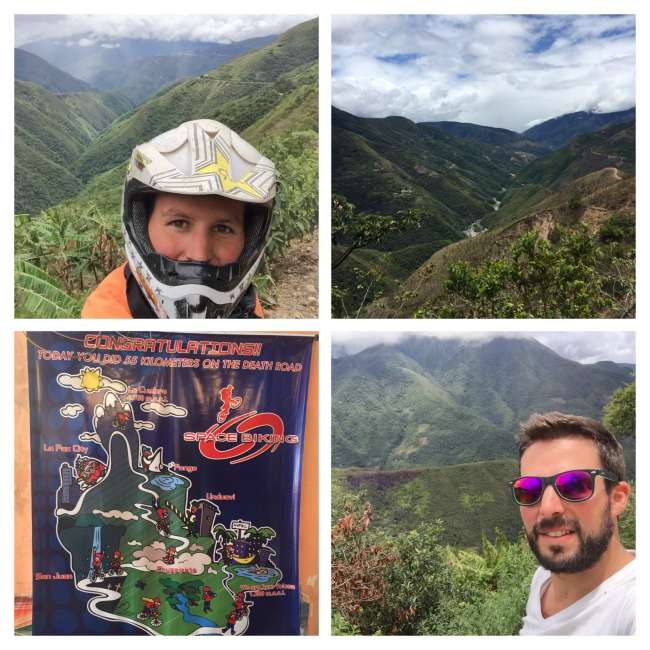
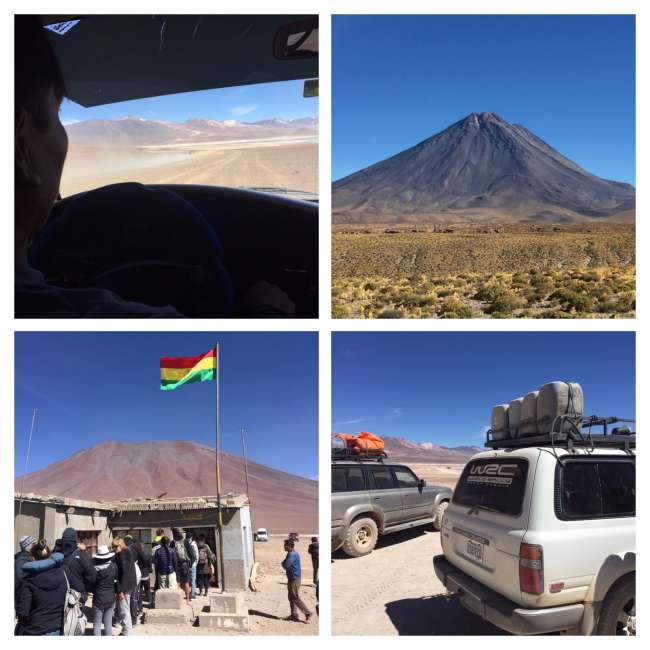
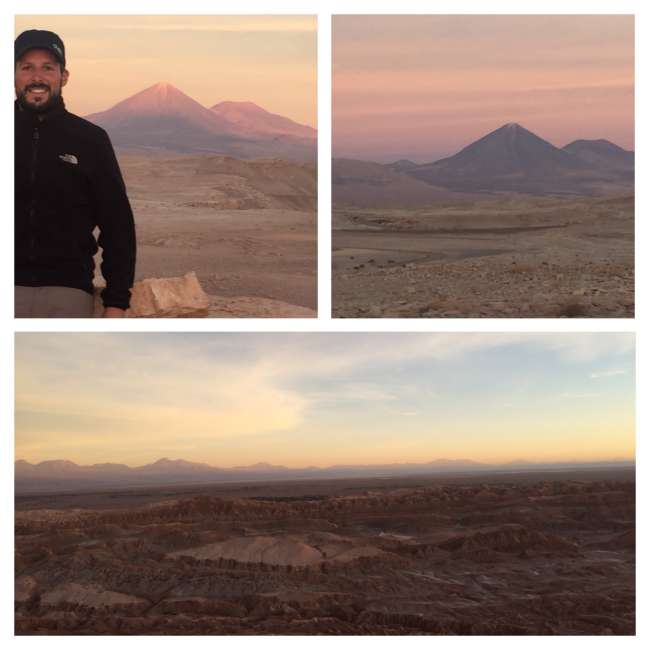
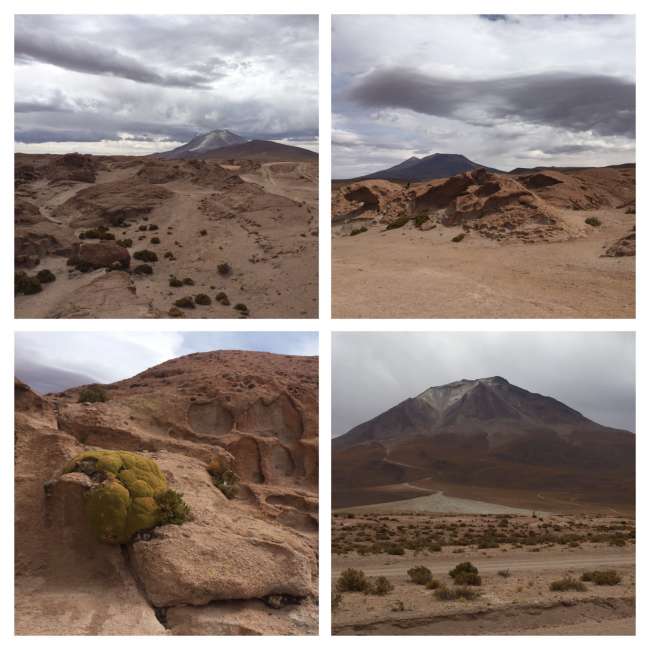
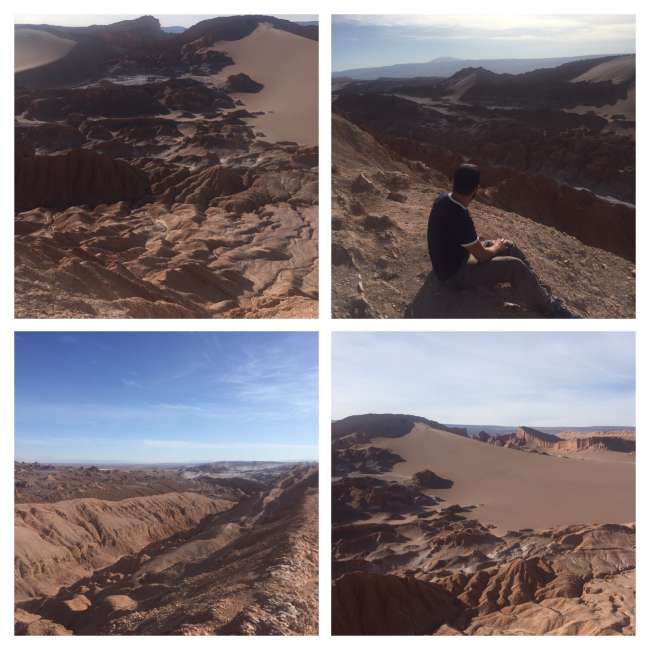
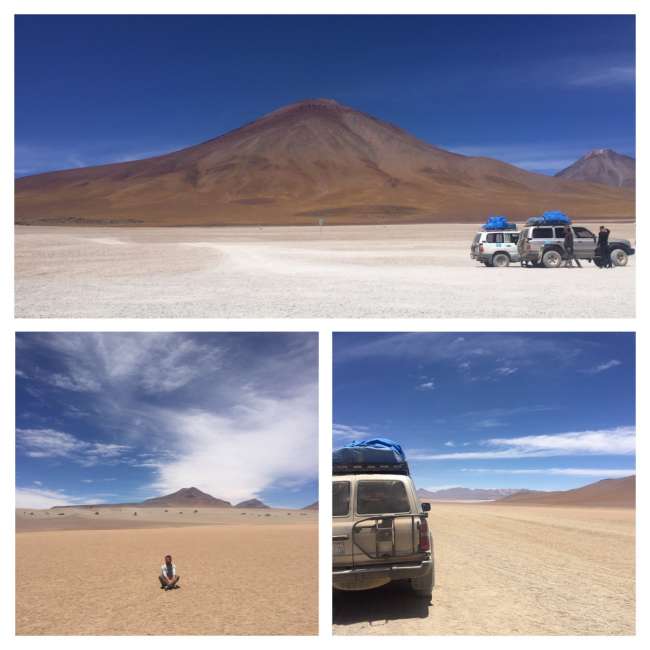
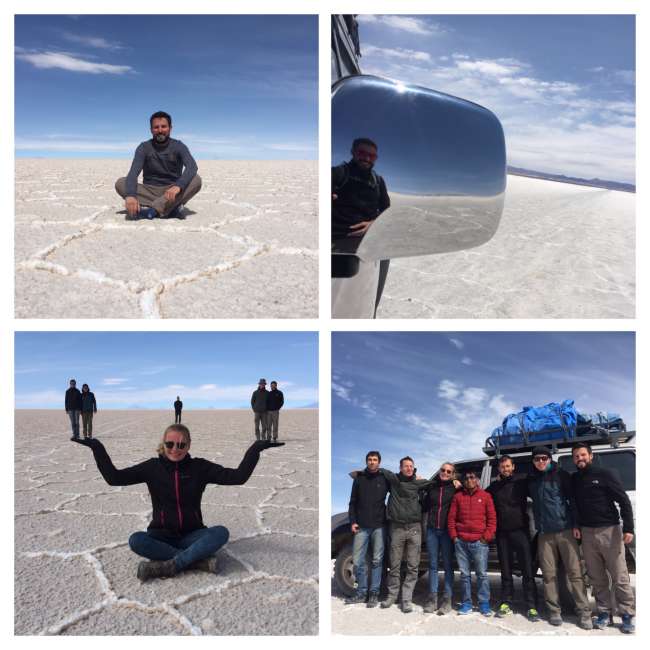
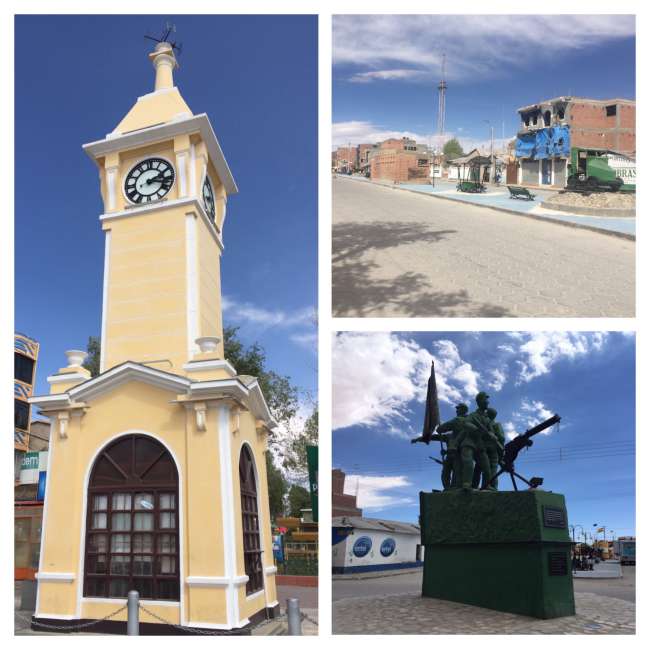
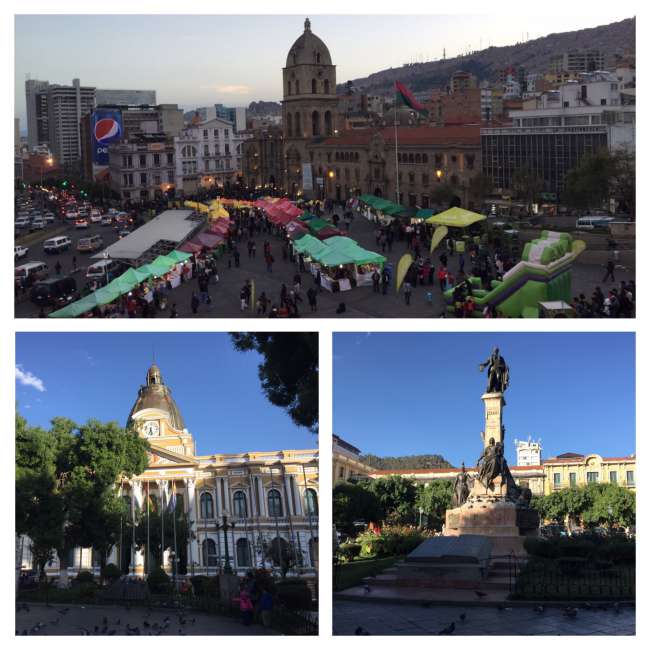
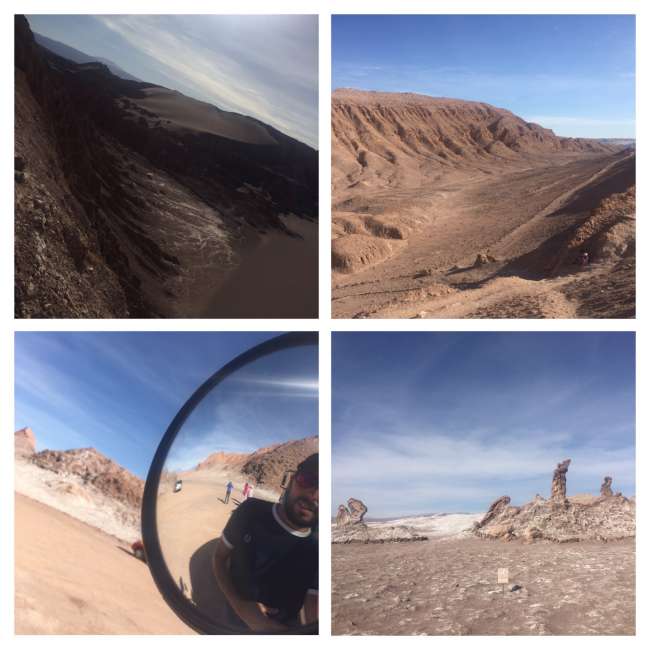
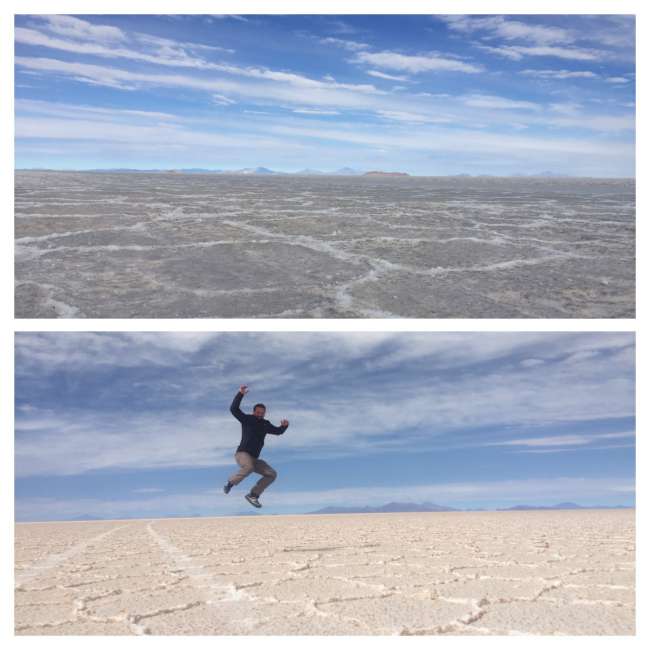
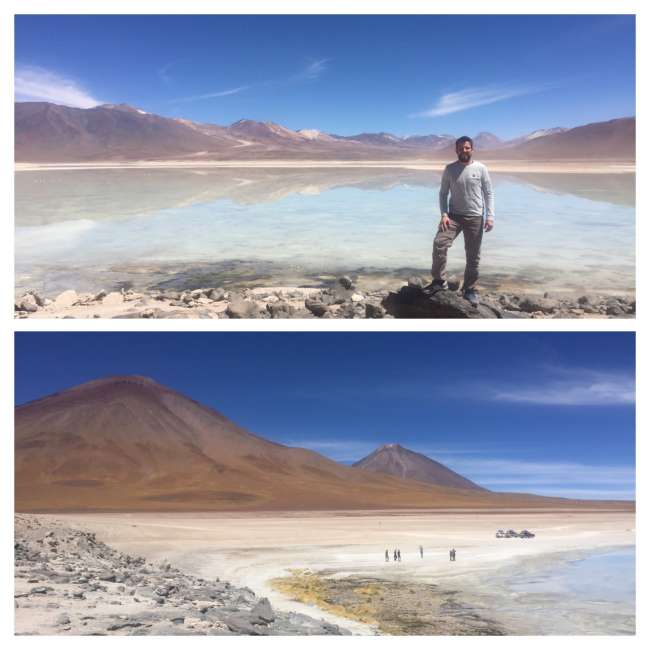
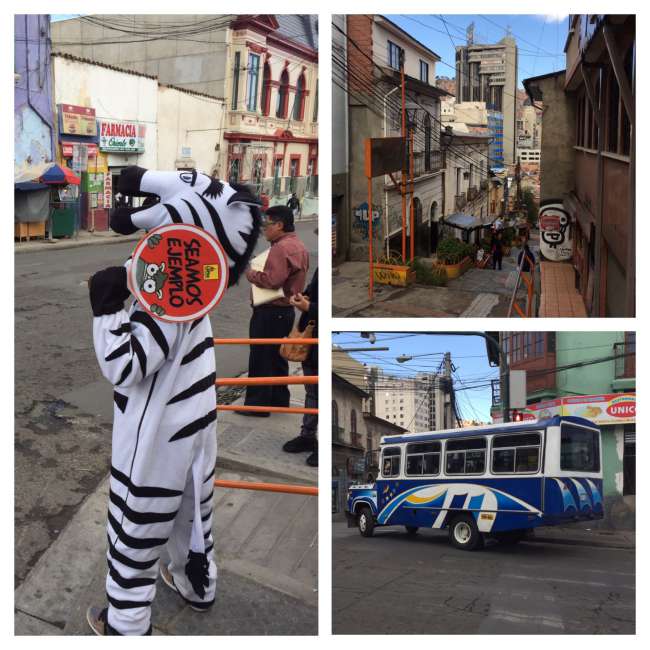
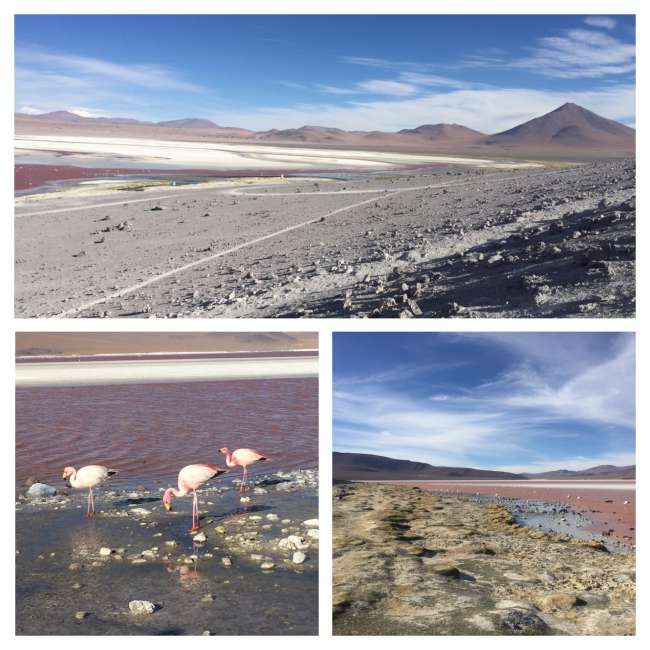
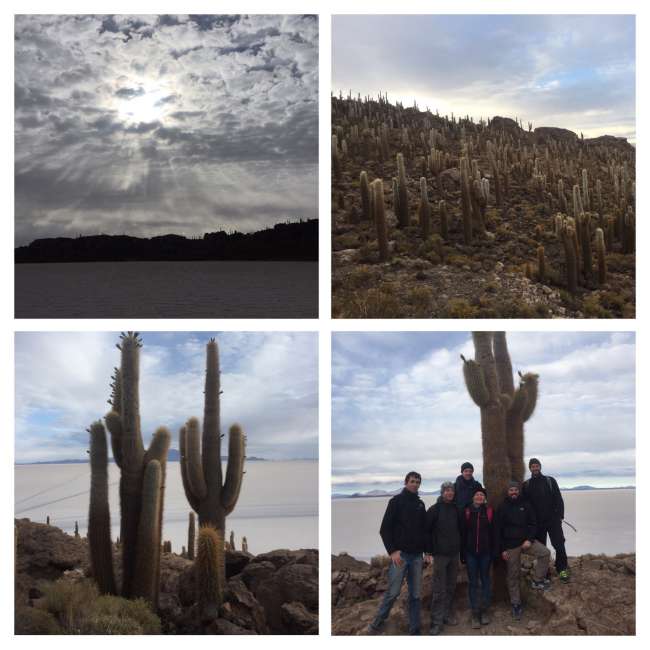
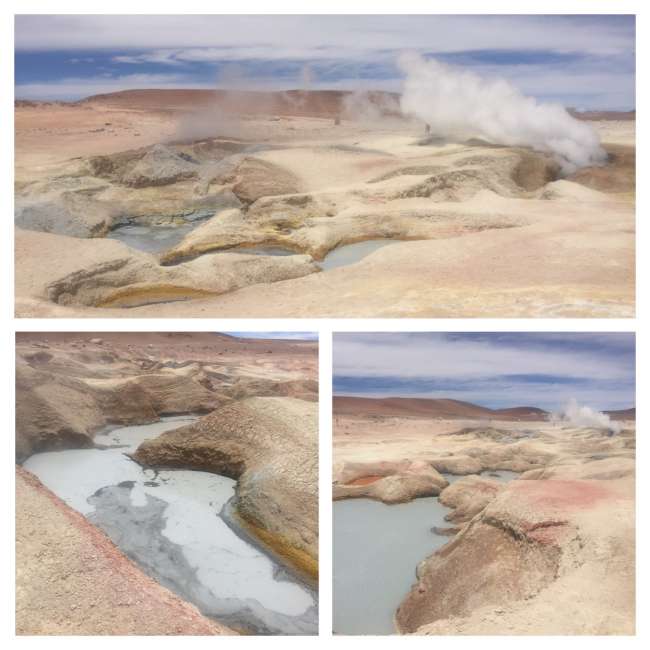
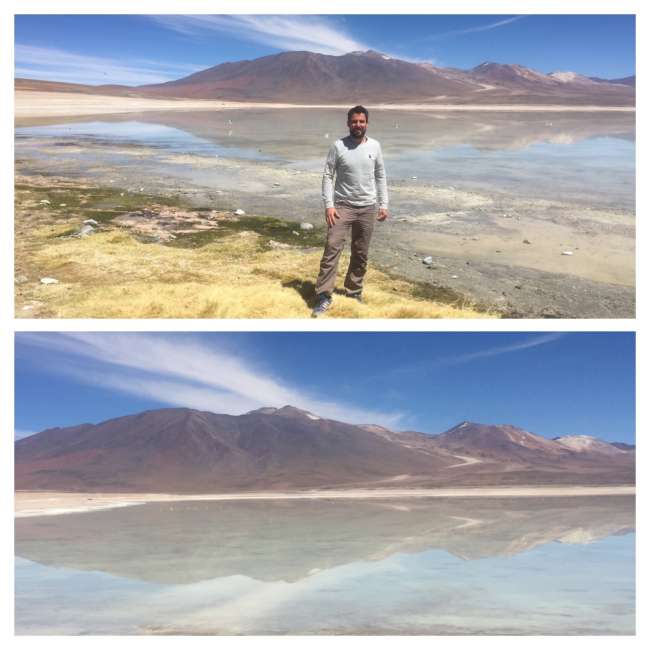
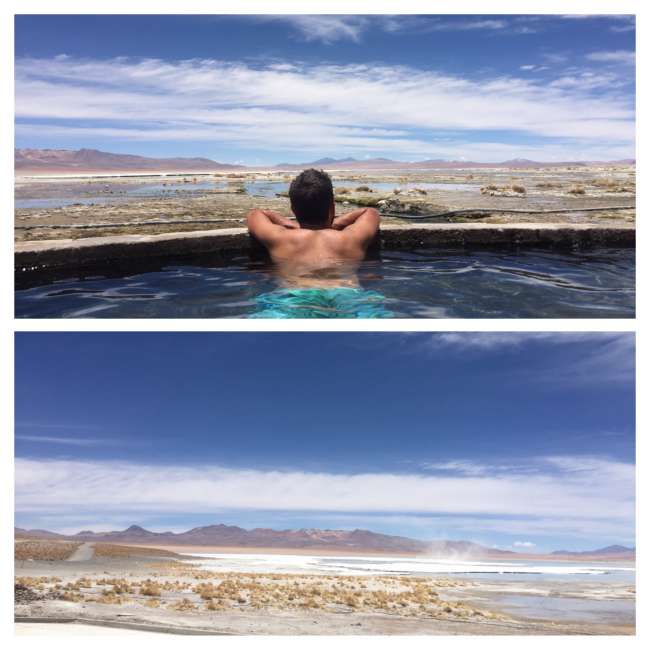
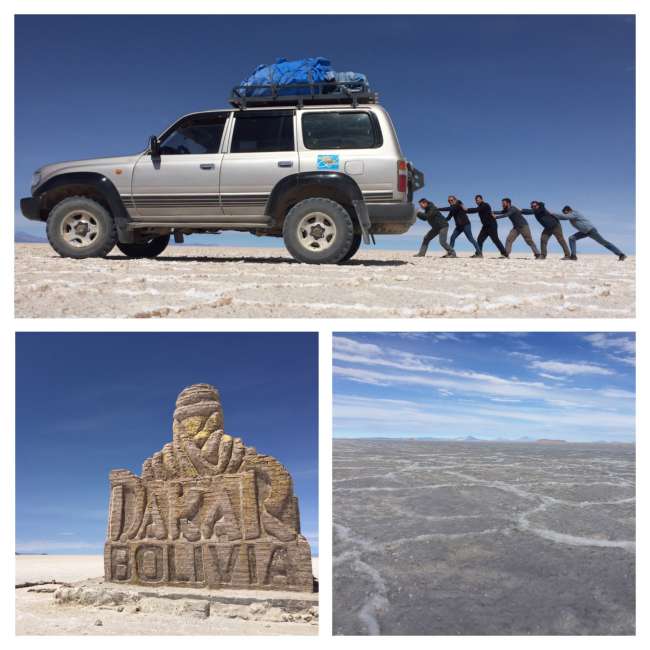
Subscribe to Newsletter
I could slowly say goodbye to Chile. The last stop was the tourist town San Pedro de Atacama in the Antofagasta region. I flew from Santiago north to Calama, crossing the snowy Andes before entering an infinitely vast desert.
From there, I took a bus to San Pedro, which is 100 km away and located at an altitude of 2400m.
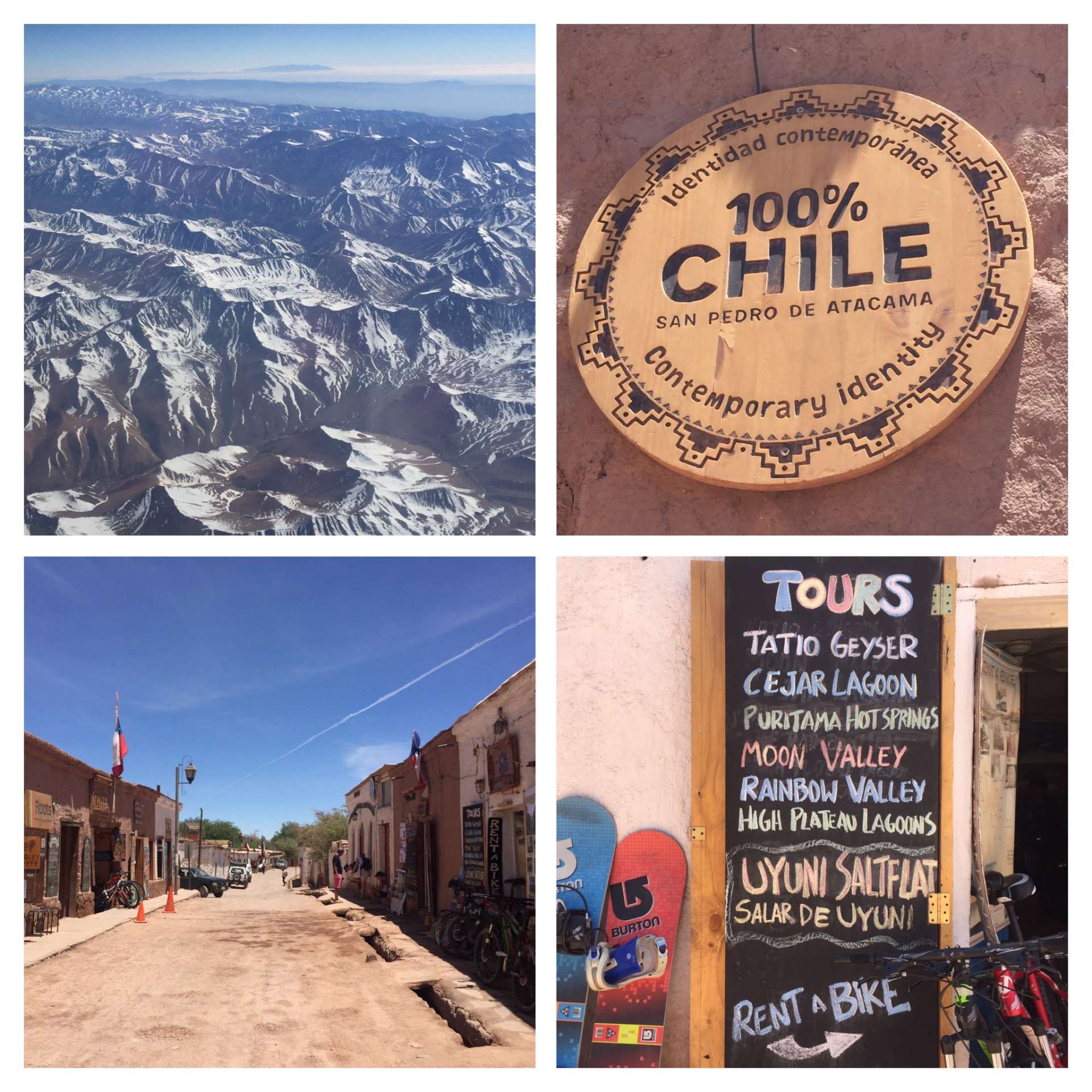
About 5000 people live here. The main part of the village consists of two intersecting streets.
These two streets are filled with agencies offering tours to Bolivia's Uyuni Salt Flats or the surrounding area of San Pedro.
The area has a lot to offer. The most popular and probably most beautiful destinations are the Valley of the Moon ('Valle de la Luna') and the geysers of 'El Tatio'.
On the day of arrival, I immediately went on a tour to the Valley of the Moon. It cost me 8000 Chilean pesos (1 € = 715 CLP). I was picked up at the hostel.
We first drove towards Valle de La Luna and took a short hike through the desert.
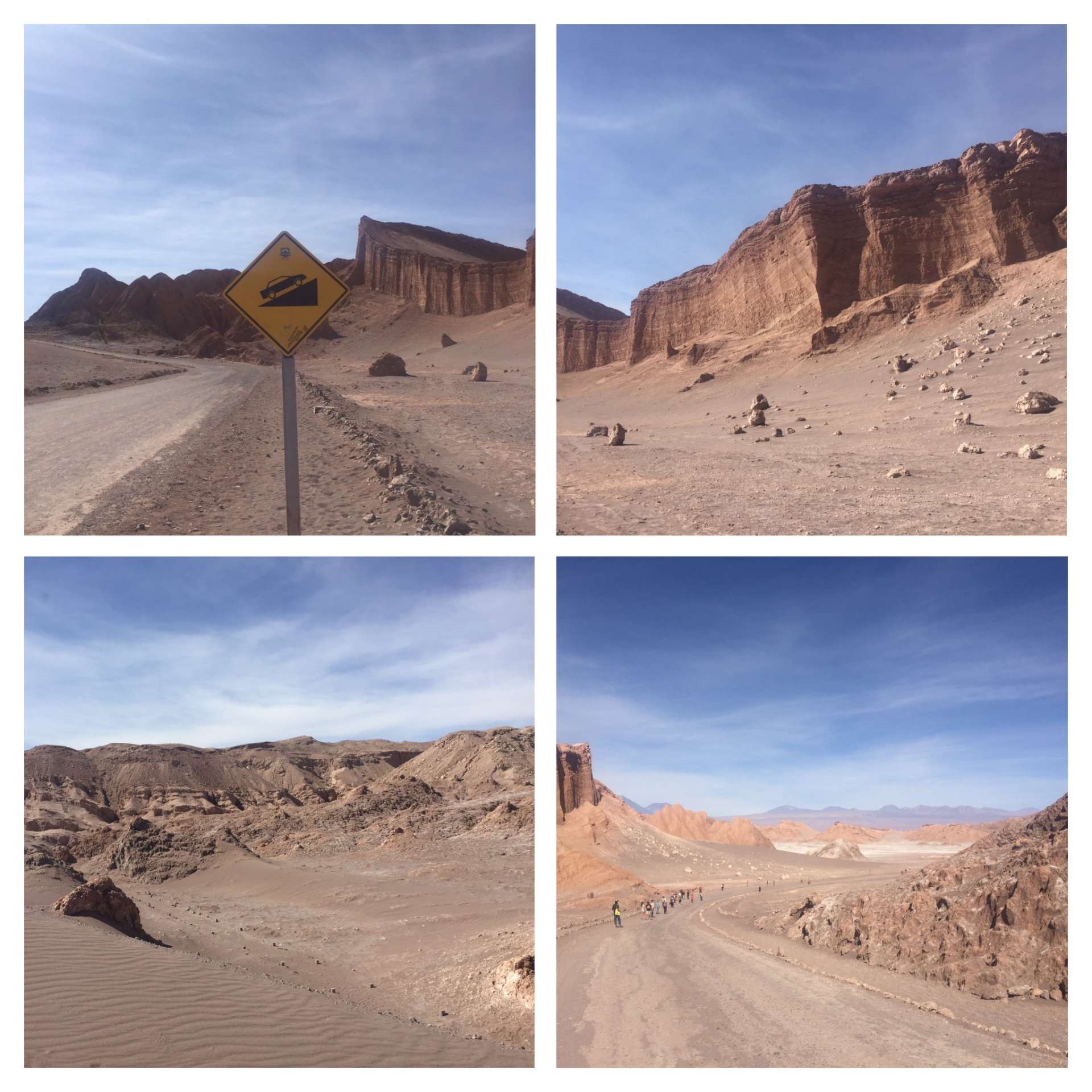
The sun shines here with such intensity that I've never experienced before. Combined with a lot of wind, it doesn't feel as hot, but that's actually the danger. You need plenty of sunscreen and layer your clothing. When it's windless or you're in a wind-protected area, it gets really, really hot. But when the wind starts, it gets really cold. That's why people often put on and take off their sweaters or jackets. This will most likely be my procedure in Bolivia and Peru for some time.
After the short hike, we visited the Tres Marias rock formations. In my opinion, they don't look like three women, even with a lot of imagination. Somehow, no one found anything interesting about this formation.

After that, we continued uphill. We stopped several times because some people in the group were running out of breath.
But the effort was worth it. At the top, we were rewarded with a perfect view of the Valley of the Moon. You could walk along the summit to have different perspectives of the valley.
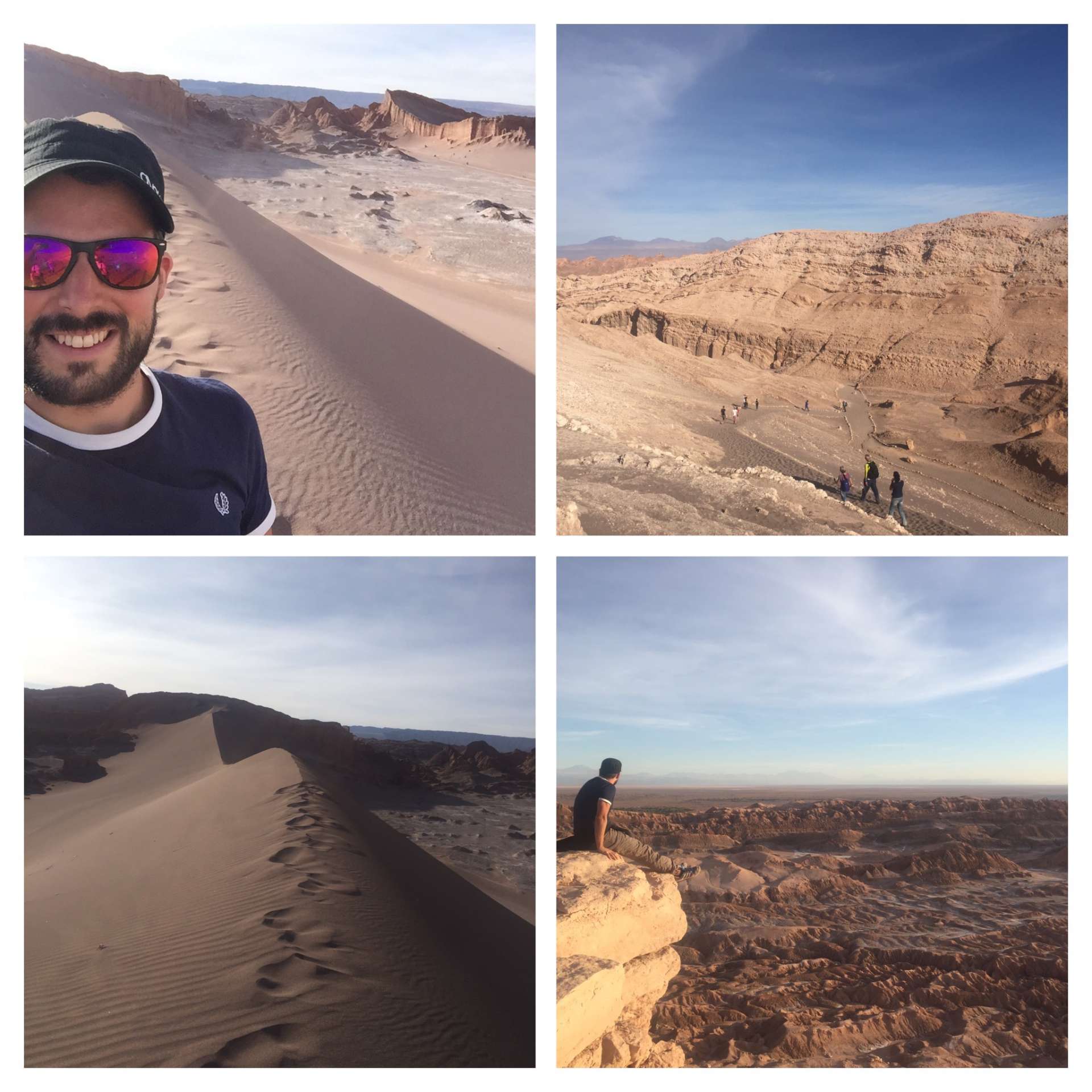
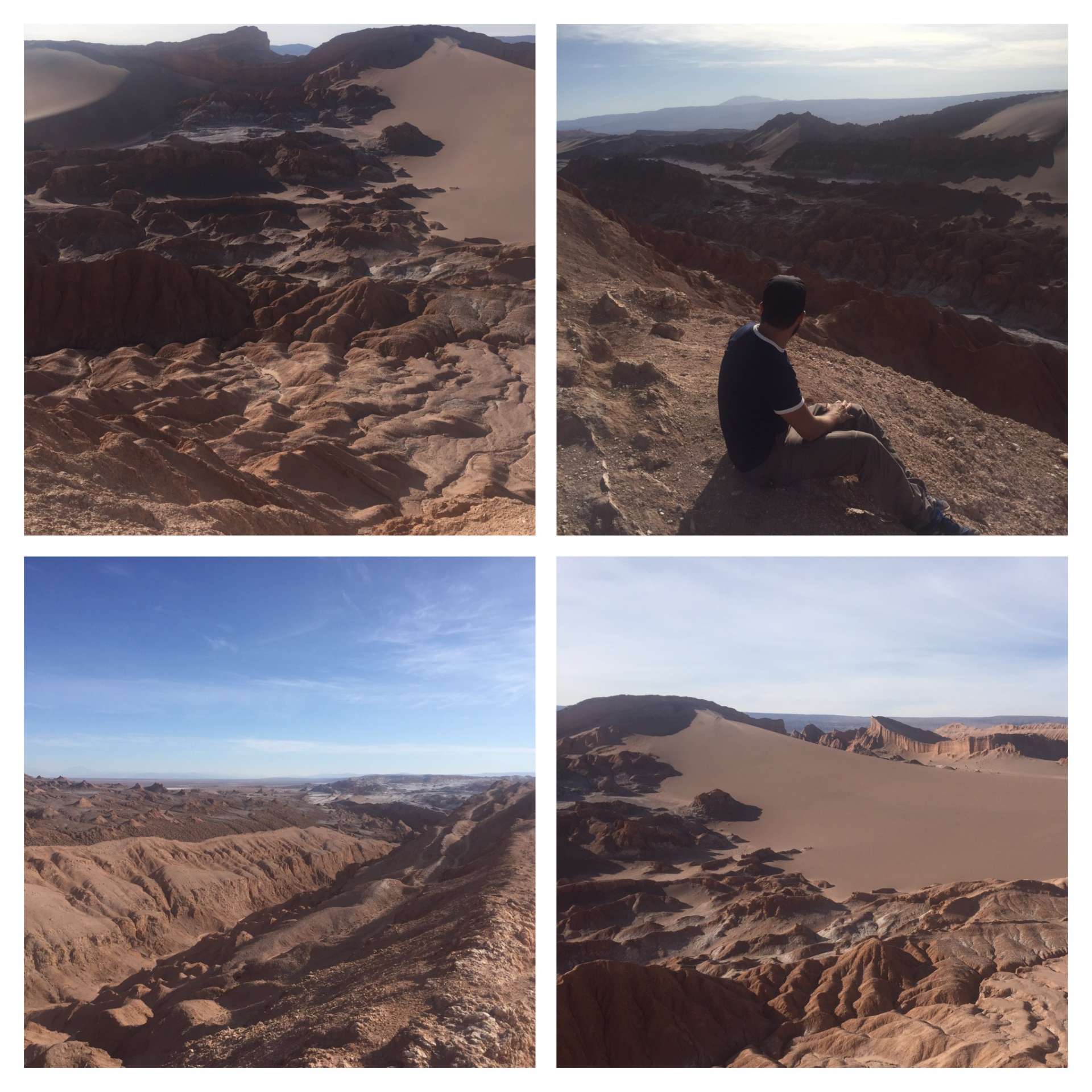
After spending some time at the summit, we headed downhill and then took a minibus to the other side of the valley. Many tourists who arrived on buses were waiting there to see the sunset. Unfortunately, as soon as the sun set, the guide hurried the group back to the bus to return to San Pedro.
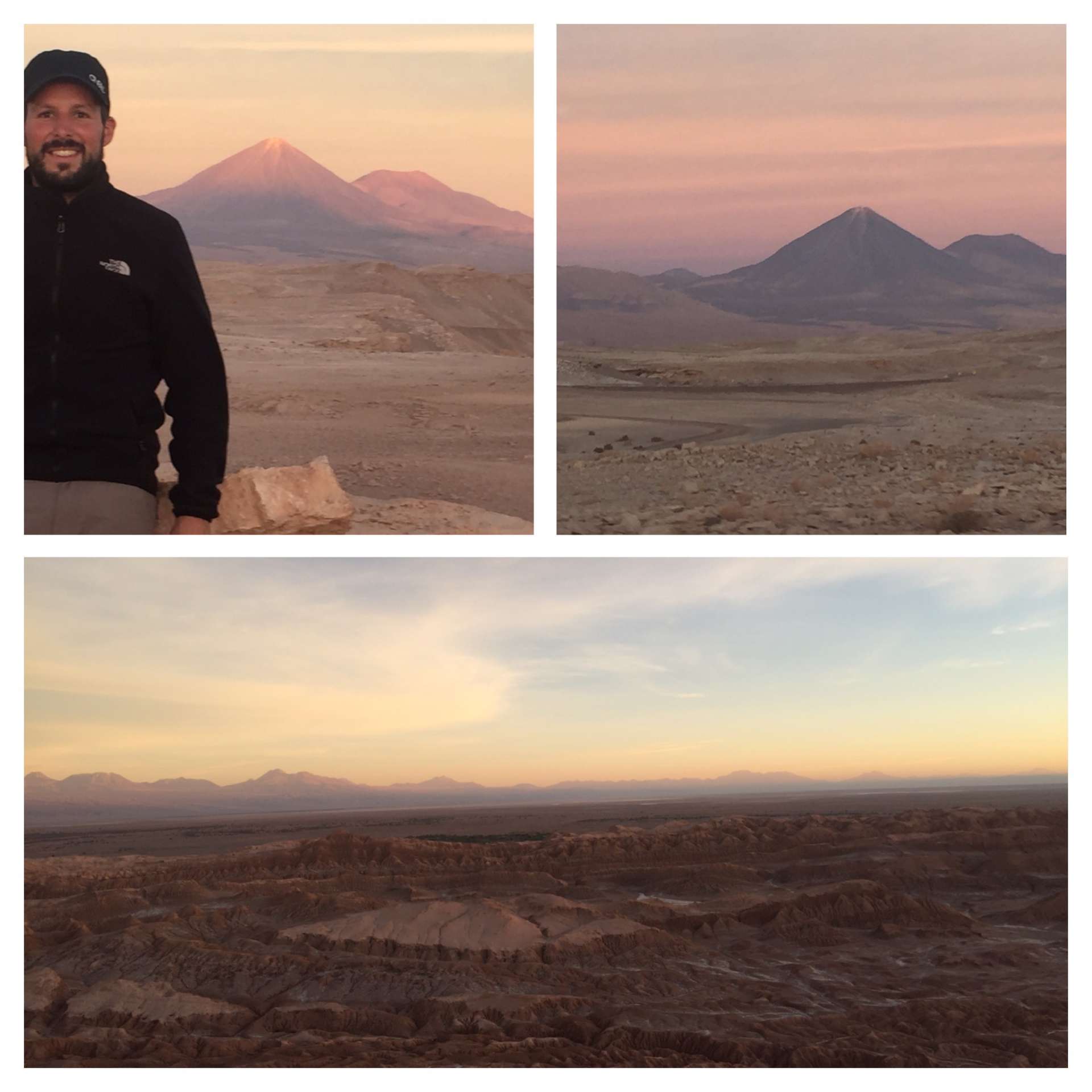
We could only see the red sky and shimmering rock formations from the bus. This gave the otherwise perfect trip, apart from the short stop at the Tres Marias, a slightly negative flavor.
If you have more time in San Pedro, which is actually recommended, you can rent a bike and go to this viewpoint on your own. For the very adventurous, a complete exploration of the valley by bike is also an option. However, this is not an easy task, as it involves about 45 kilometers through the desert.
For me, the next morning marked the beginning of a 3-day tour from San Pedro to Uyuni. The tour started in the Atacama Desert, crossed the border into Bolivia, passed numerous lagoons, geysers, countless volcanoes, and rock formations, and ultimately reached the highlight - the Salar de Uyuni, the largest salt flat in the world, a 525 km journey through the desert.
I had already chosen the tour operator 'World White Travel' from home. It was described as a top provider in several travel blogs, guidebooks, and websites. Many smaller operators might have the same price, but they do not prioritize safety, payment for guides, and meals to the same extent.
The tour cost me 110,000 CLP (approximately 150 €) including 2 nights' accommodation (including breakfast, snacks, and dinner).
It started with a pickup from the hostel in San Pedro. We started with 12 people in a bus and drove together to the border. The border station is not far from San Pedro but is located at an altitude of 4500m. Some people have problems with the rapid ascend here.
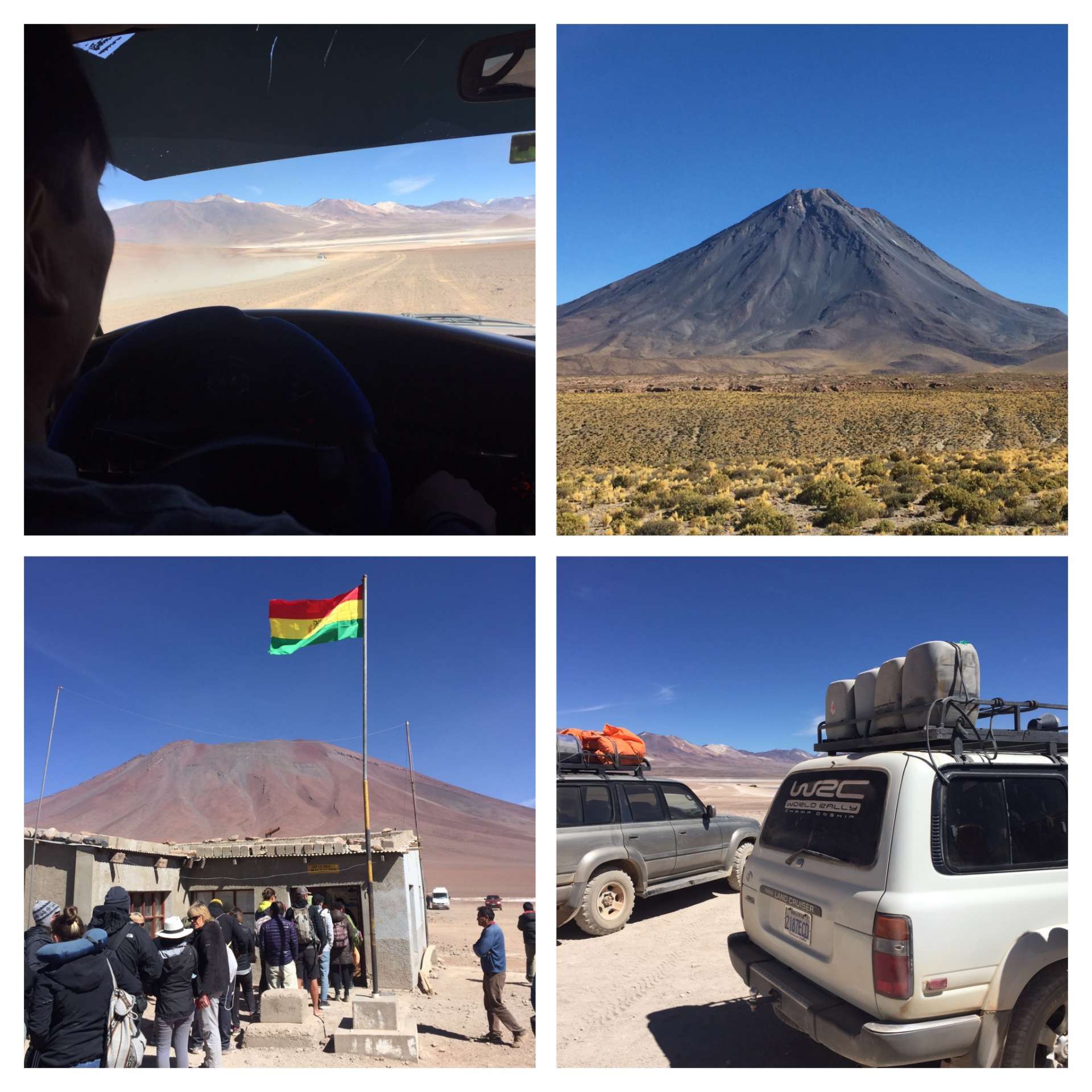
There, we had a generous breakfast with lots of coca tea, which I will drink more often in the coming weeks. Coca tea is said to suppress hunger, fatigue, and cold, and is very effective against altitude sickness.
It helps you better cope with the problems caused by the altitude. Coca can be consumed as tea or by chewing the leaves.
I like the tea, it's similar to herbal tea. Chewing the leaves is supposed to cause a slight numbness, but it didn't work for me. I tried it only once because it wasn't anything special.
Importing it to Germany is prohibited and subject to narcotics laws. However, it is completely normal in countries like Chile, Bolivia, and Peru. Coca leaves and tea are available with almost every meal. The processing of coca leaves into tea is even subsidized by the government.
The coca plant is as much cocaine as grapes are wine.
It was busy up there, as all the agencies gathered there. After completing the border formalities, we divided into two Toyota SUVs with six people each. Our jeep consisted of four Germans, one Dutch woman, and one Argentine. Since our driver, Miguel, was also our guide and only spoke Spanish, it was good to have Astrid, the Dutch woman, and Carlos, the Argentine, who could speak Spanish. We were a fun group, and all six of us were solo travelers. The other group also followed the same route and was usually close to us, which turned out to be valuable later.
Now the tour really began. We first had to pay an entrance fee to the 'Reserva Nacional de Fauna Andina' national park, which was not included in the price. The fee was 150 Bolivianos (1 € = 7.3 BOB). We had previously exchanged Chilean pesos for Bolivianos in San Pedro.
First, we headed to 'Laguna Verde' (Green Lagoon) at an altitude of 4,329 m. An incredible play of colors greeted us here. The mountains in the background were reflected in the truly green water. The green color comes from a high concentration of minerals such as magnesium, calcium carbonate, lead, and arsenic.
Due to the presence of various toxins, it is not recommended to drink from these lagoons. We had plenty of time to take pictures and get a close look at the lagoon.
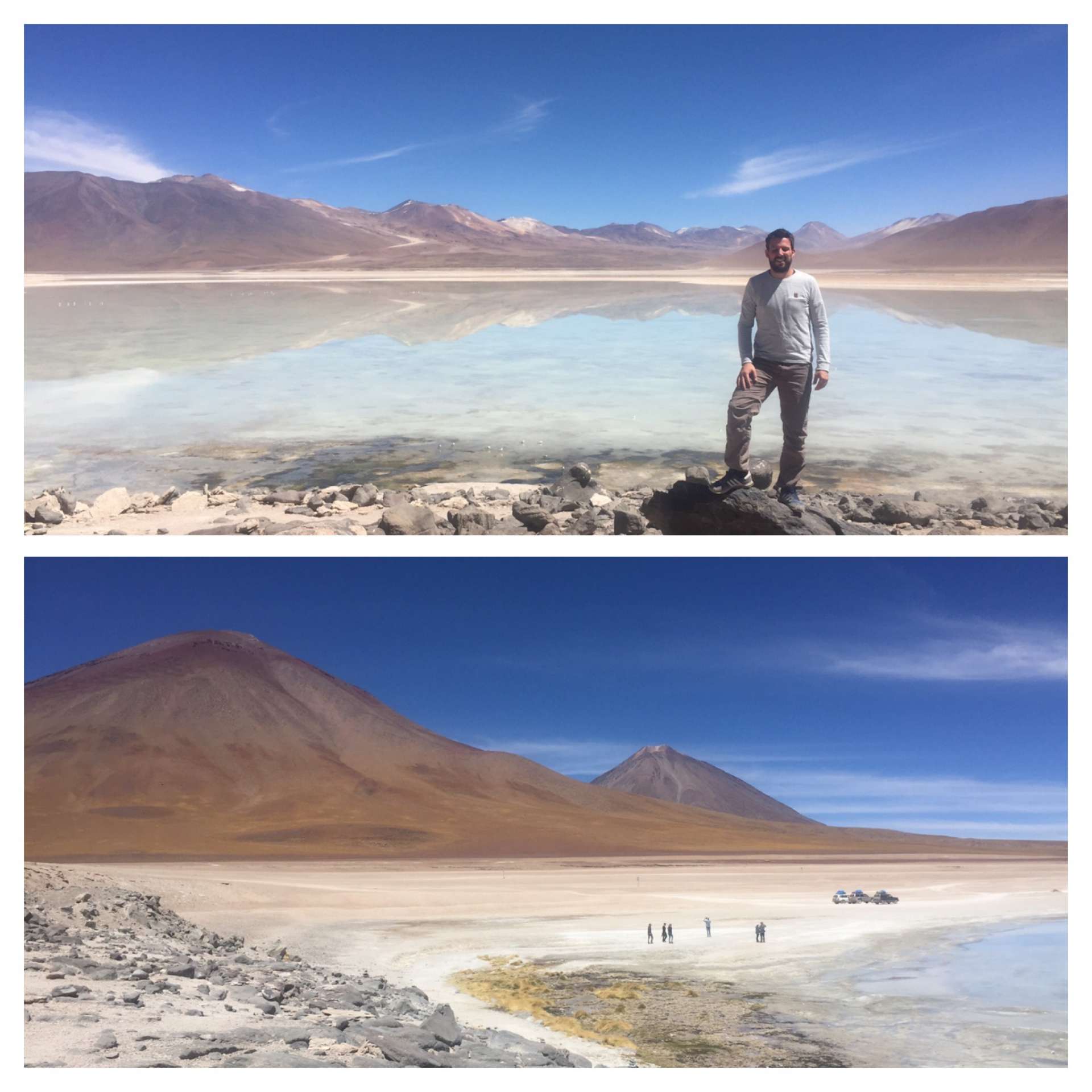
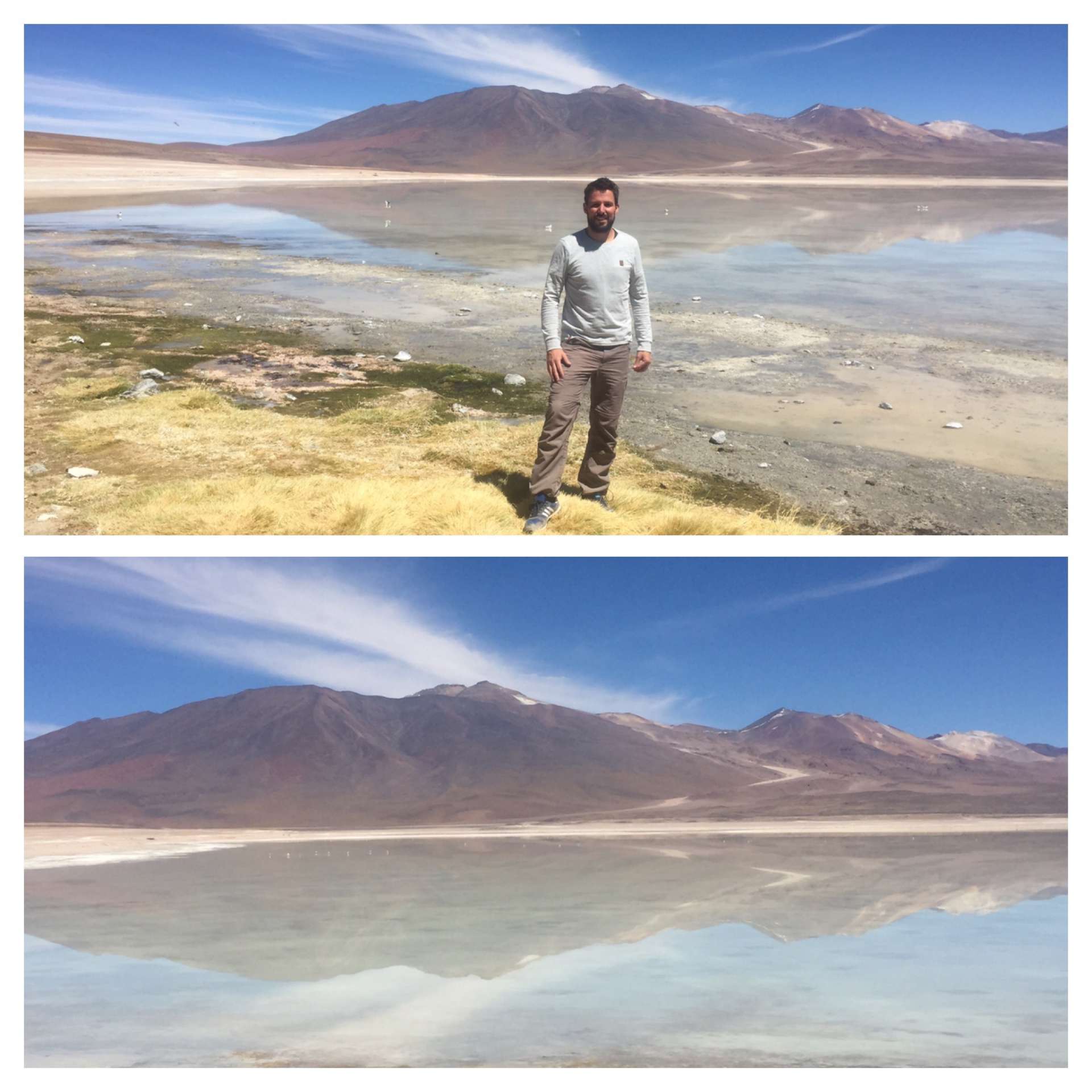
We then continued to the 'Termas Polques'. Here, a fee of 3 Bolivianos had to be paid, or 6 Bolivianos with a towel. It was a simple thermal pool right on the edge of the 'Laguna Chalvari'. The water temperature was 36-38 degrees Celsius, making it very pleasant to swim in. We had a 45-minute break, but we were advised not to spend more than 20 minutes in the water. We had a fantastic view from the thermal pools onto the lagoon.

We then drove for 1.5 hours to reach the 'Sol de Mañana' geysers at an altitude of 4,850 m. Even in the jeep, you could smell the sulfur. When we got out, a strong smell of sulfur hit us. The geysers were bubbling, and one of them produced a large cloud. It was a very impressive sight.
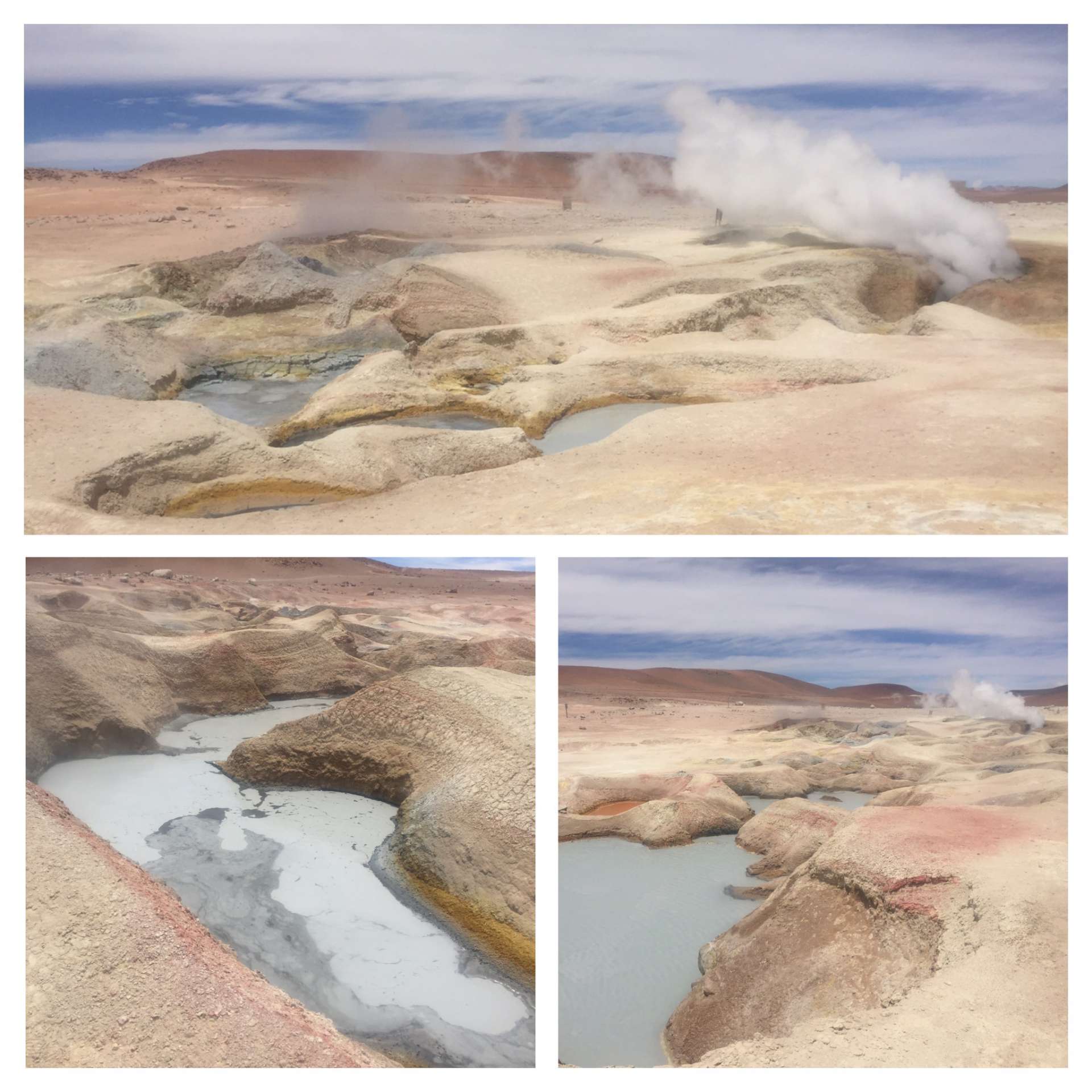
After a half-hour stop, we continued our journey. We went to our final destination for the day, the 'Laguna Colorada'!
But before we reached the lagoon, we first visited our accommodation.
It was a very simple hotel with 4 dormitories for 6 people each, making it easy to allocate rooms. After our arrival, we had an early lunch and, of course, coca tea, as we were at an altitude of 4200m. Miguel was not only our driver and guide but also our cook.
Afterward, we had to get back into the jeep and head towards the 'Laguna Colorada'. However, our jeep didn't start. Miguel grabbed the toolbox and started troubleshooting. He unscrewed various parts, tapped everything with a screwdriver, disconnected and blew into the fuel hoses. Unbelievable!
In the end, he changed the battery, and the engine started :-D
So, after an hour of hard work from our cooking and repairing guide, we were able to continue our journey to the lagoon.
And it was worth it!
There was a lagoon that had it all. A 60 km2 lake. As the name suggests (Colorada = Red), the water was indeed red. Very impressive. The red color comes from a type of algae and the high mineral content of the water.
The numerous flamingos completed the picture. We had plenty of time to take pictures and walk around the hill located next to the lagoon.
It was a great end to an already beautiful day.

We had covered 140 kilometers on this first day.
Back at the accommodation, we had dinner.
There were no showers here, but it wasn't really a problem. We had electricity in the evening for 2 hours, which we used to charge the batteries of our cameras and phones.
We fell into our beds, exhausted. Unfortunately, I couldn't sleep even though I usually had no problems with the altitude until now. I started to have a headache, which turned into constant pain in the morning.
We had breakfast at the accommodation before continuing at 7:30 a.m.
The local remedies eventually helped. Shortly afterward, everything was fine again.
The second day started with a visit to an attraction called 'Árbol de Piedra'. Árbol means tree, and Piedra means stone. So? A tree that looks like a stone? In the desert? No way! The opposite is true!
A huge stone that looks like a tree. It was created by a volcanic eruption. There were also numerous other stones around it, which all looked pretty ordinary.
We made a relatively short photo stop and continued. But not too far. Suddenly, our jeep didn't start again! We stopped in the middle of nowhere. The jeep of the other group was behind us and could help us figure out the problem.
Two girls from the other group moved away a bit to do their business. Suddenly, a tornado formed out of nowhere, just one meter away from them. An unbelievable scenario. The tornado initially had a diameter of at least 10 meters.
First of all, we had to ensure everyone's safety.
Shortly after, the tornado moved on. Throughout the day, we saw several small tornadoes and whirlwinds.
Then we continued the search for the problem. We tried everything. Among other things, the mandatory battery change with the engine running, which was unsuccessful.
Eventually, the jeep started again. No one really knew why.
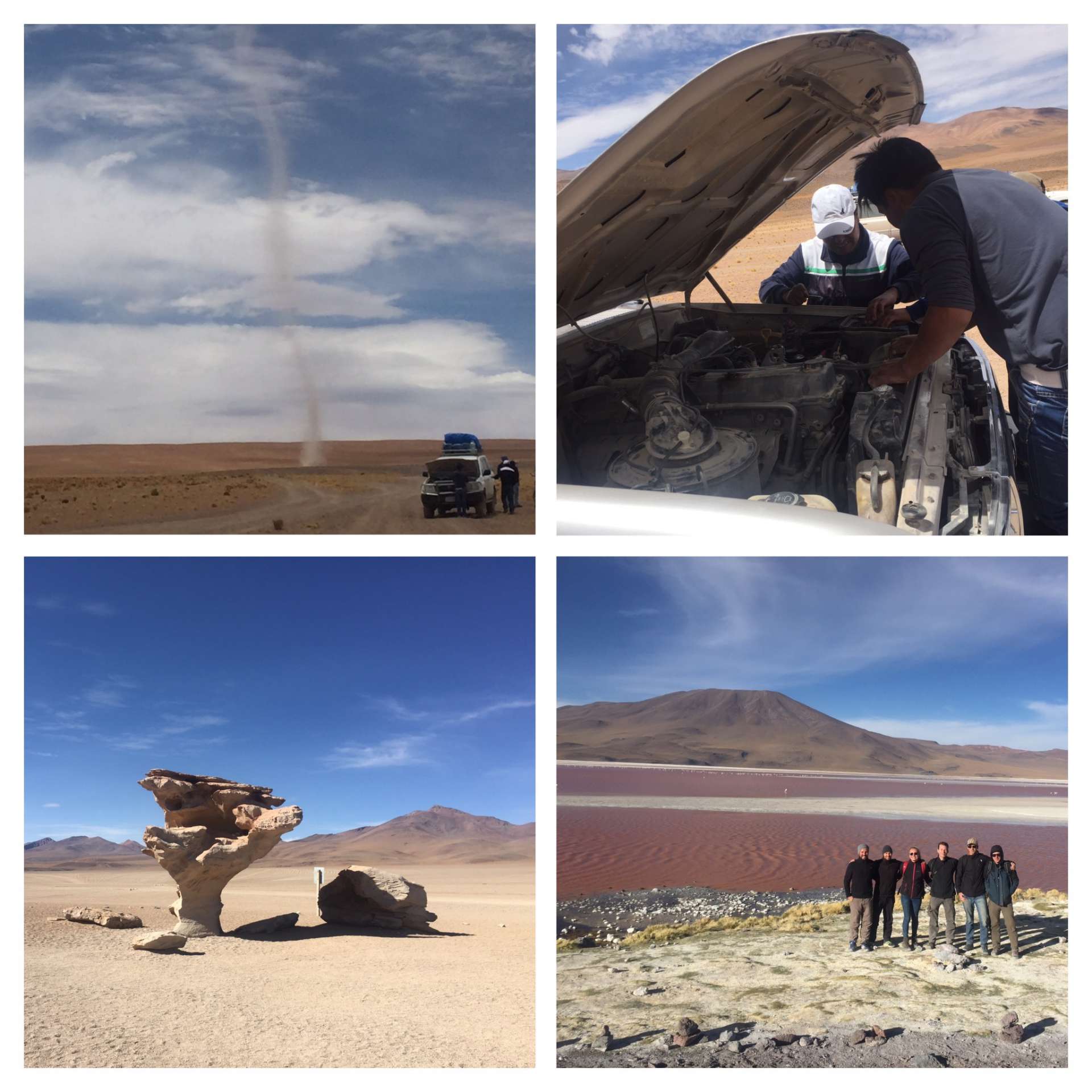
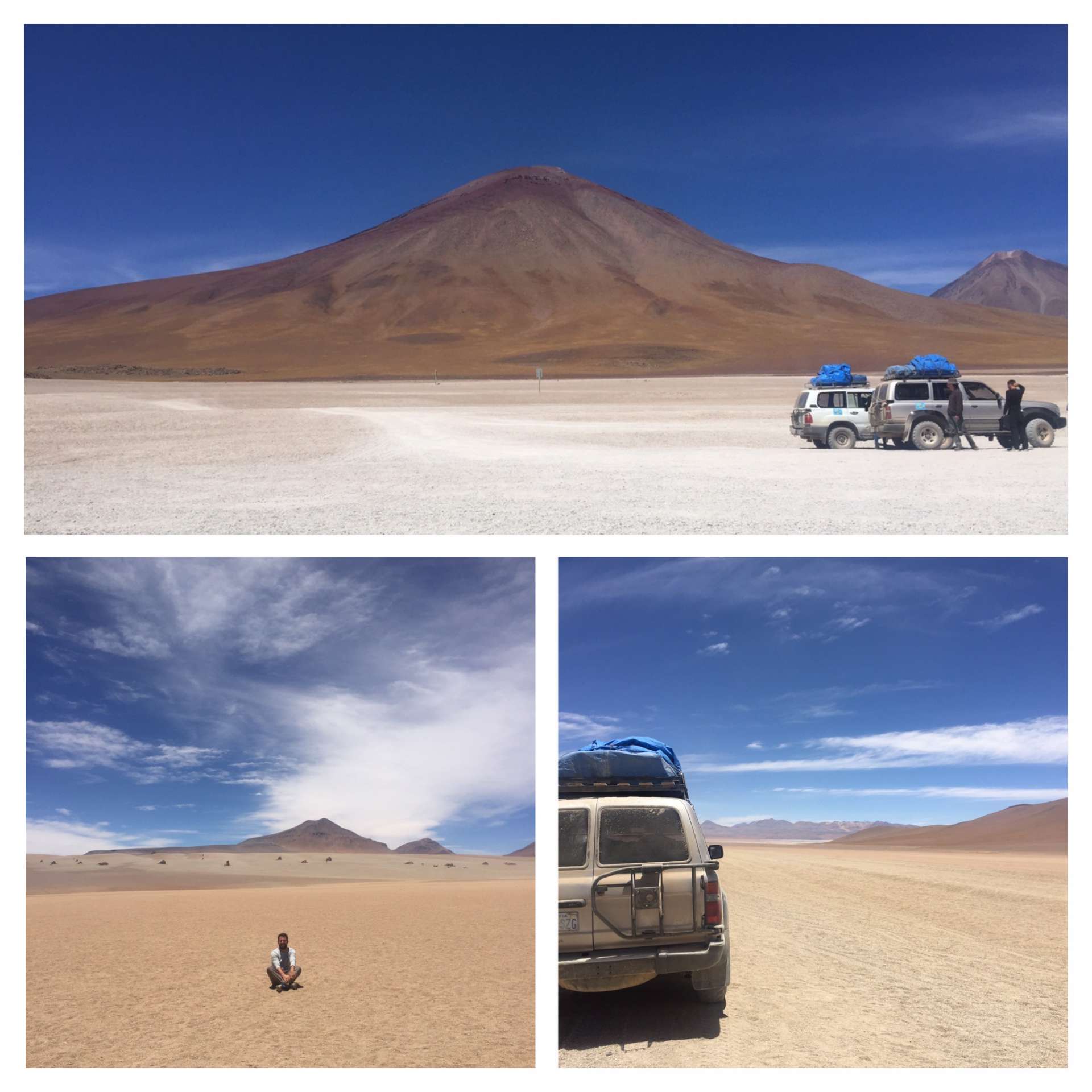
After that, we visited the first of four consecutive lagoons, Laguna Honda. We also visited the lagoons 'Chiarkota', 'Hedionda', and 'Cañapa'. The second day was very lagoon-focused, which may sound monotonous, but it was by no means boring.
The first two lagoons were quite similar and made for beautiful photo opportunities. The last two were similar in terms of photos, but they stood out more due to chemical-like substances found on the edge of the lakes. Unlike all the previous lagoons, it was strongly advised not to enter the water here. Interestingly, most flamingos were found in the places that looked the unhealthiest. They would also put their heads into the 'water' and apparently always find something to eat.
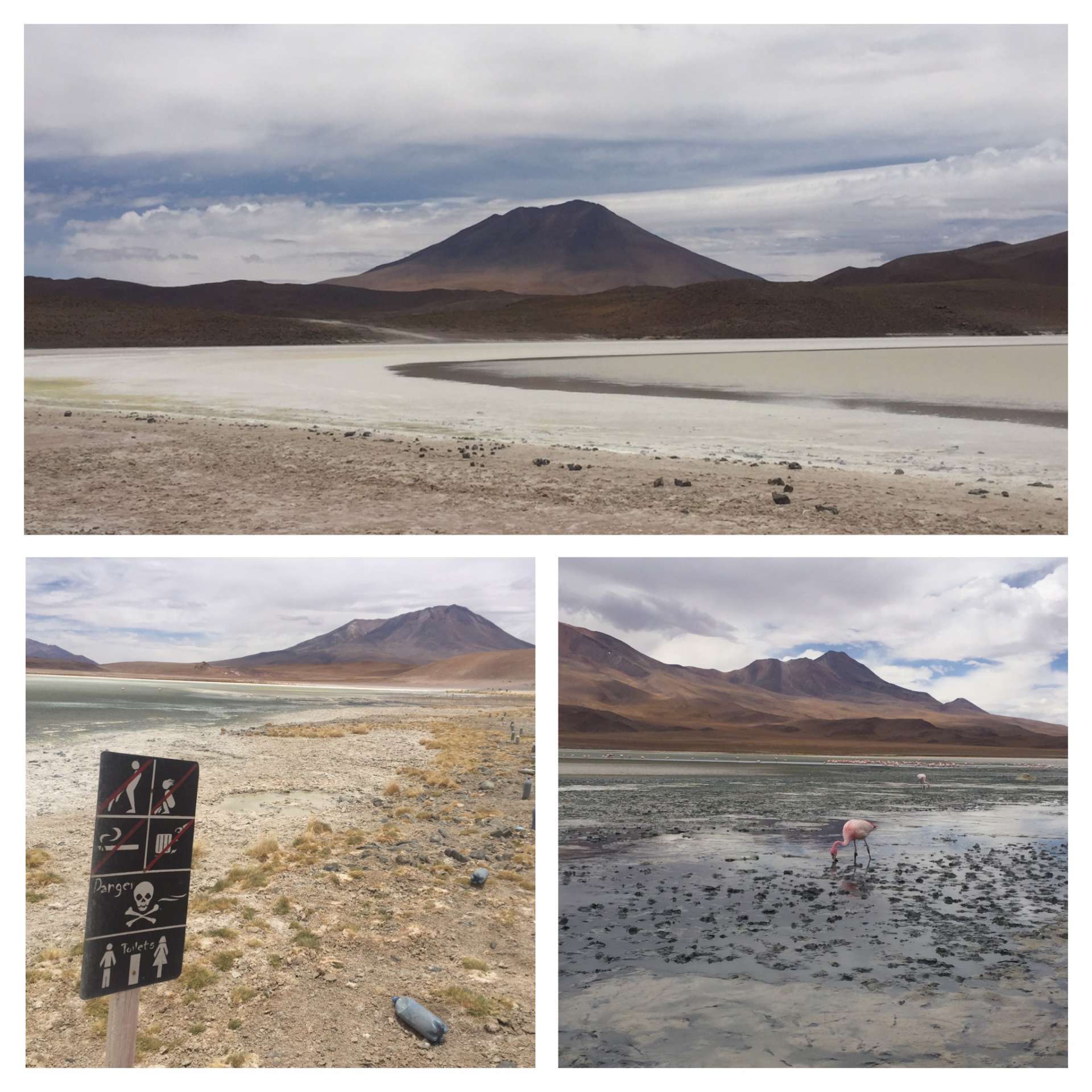
Speaking of food! We had our lunch break right next to 'Laguna Hedionda'. A small village was located here, where all the agencies took their breaks. The guides cooked for us again here.
The meals looked similar most of the time, but they were always good. For lunch, we had plenty of vegetables and usually sausages or chicken. In the evening, we had soup and spaghetti as an addition. It was simply easy to prepare.
After the lunch break, we headed to our next spot, the 5,868 m high active volcano Ollagüe, which we photographed.

After that, we arrived at our accommodation in the small village of San Juan. We stayed at a salt hotel where the floors, walls, and beds were made of salt.
After dinner, we chatted for a short time since an early morning was ahead of us.
The alarm went off at 3:30 a.m., and half an hour later, we were on our way to Uyuni.
The actual destination of our tour! The Uyuni Salt Flats. It covers an area of 10,582 square kilometers. The salt crust is over 10,000 years old and formed from a dried-up lake.
The amount of salt is believed to be 10 billion tons, with an annual extraction of 25,000 tons.
We started that early to witness the sunrise. We drove for 1.5 hours and only saw a cloudy sky. Unfortunate.
After another hour of driving, we reached the Incahuasi Island, located in the middle of the salt flats. The cacti on the island are over 1000 years old. We had breakfast here after extensively exploring the island.
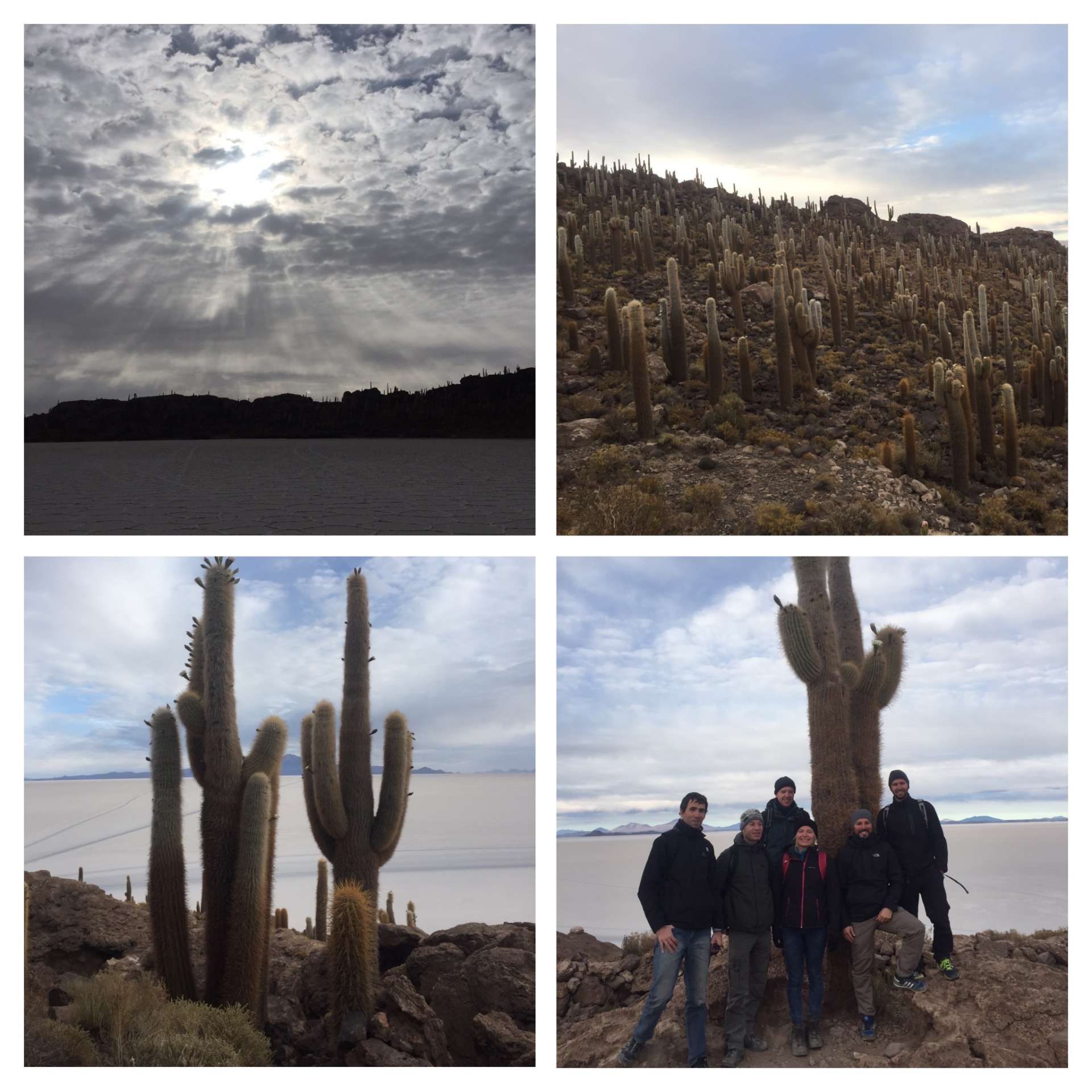
Then we drove further into the salt flats for the highlight of the tour. Fortunately, the clouds had cleared up. We stopped for an hour and let our imagination run wild for photo opportunities. We could have easily spent another hour here.

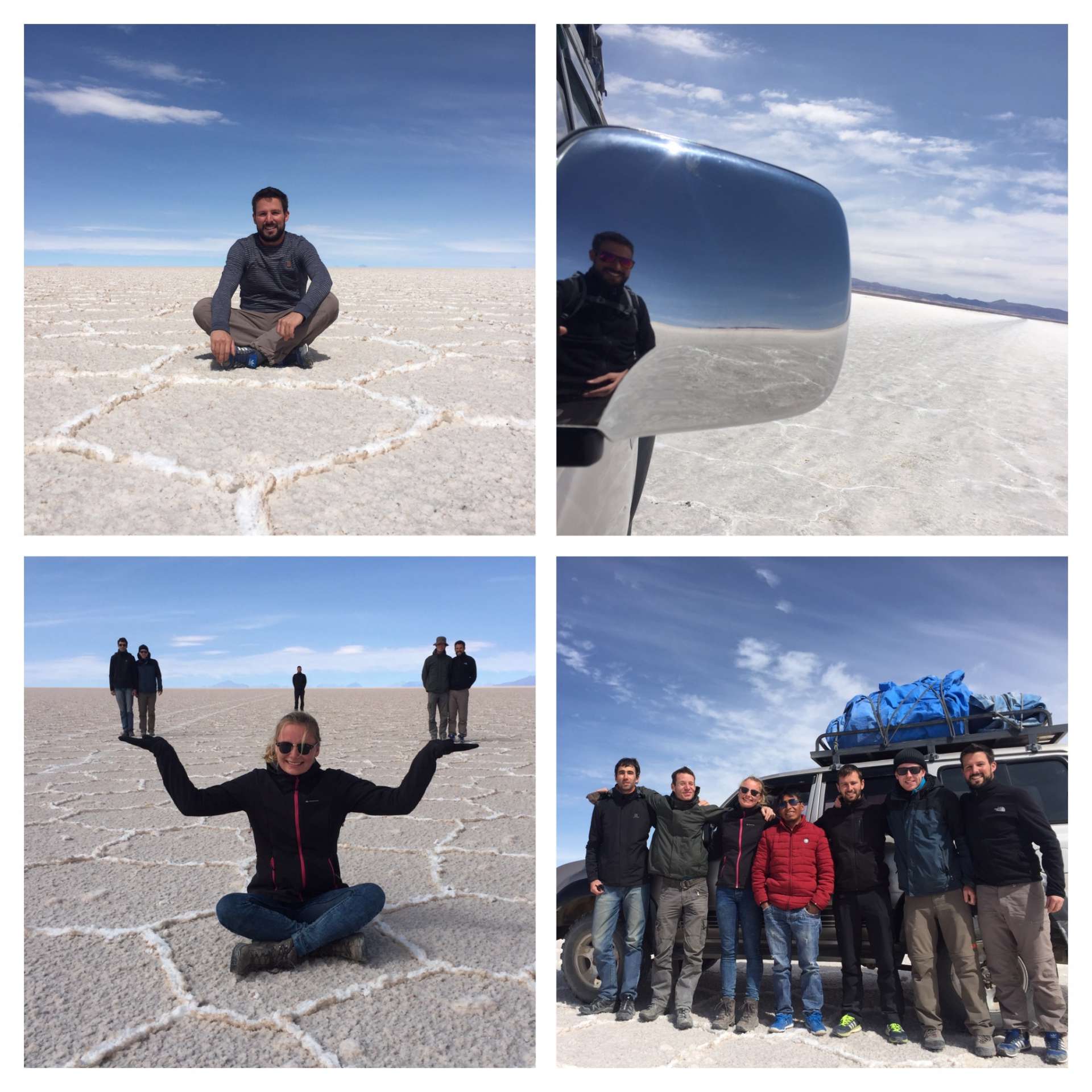
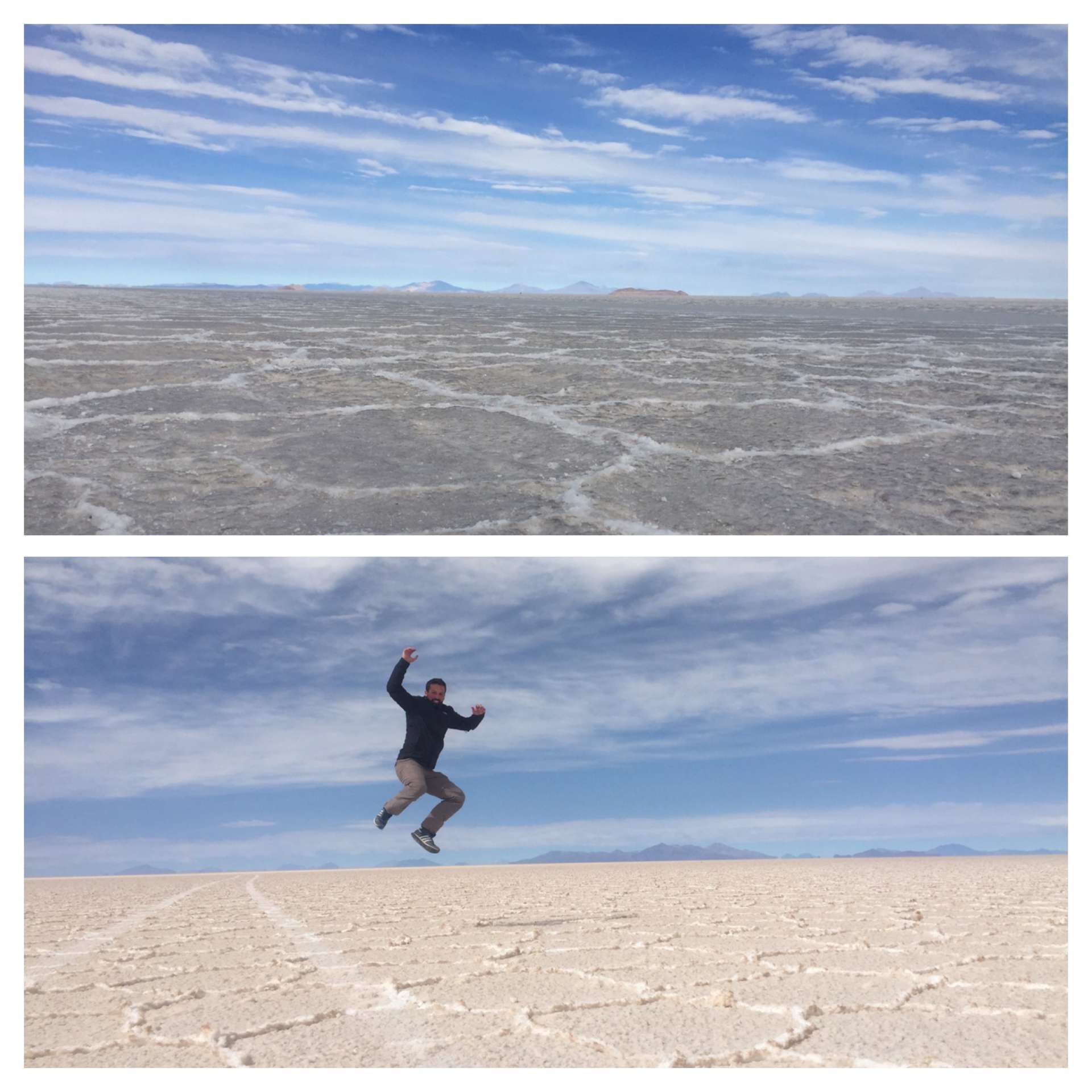

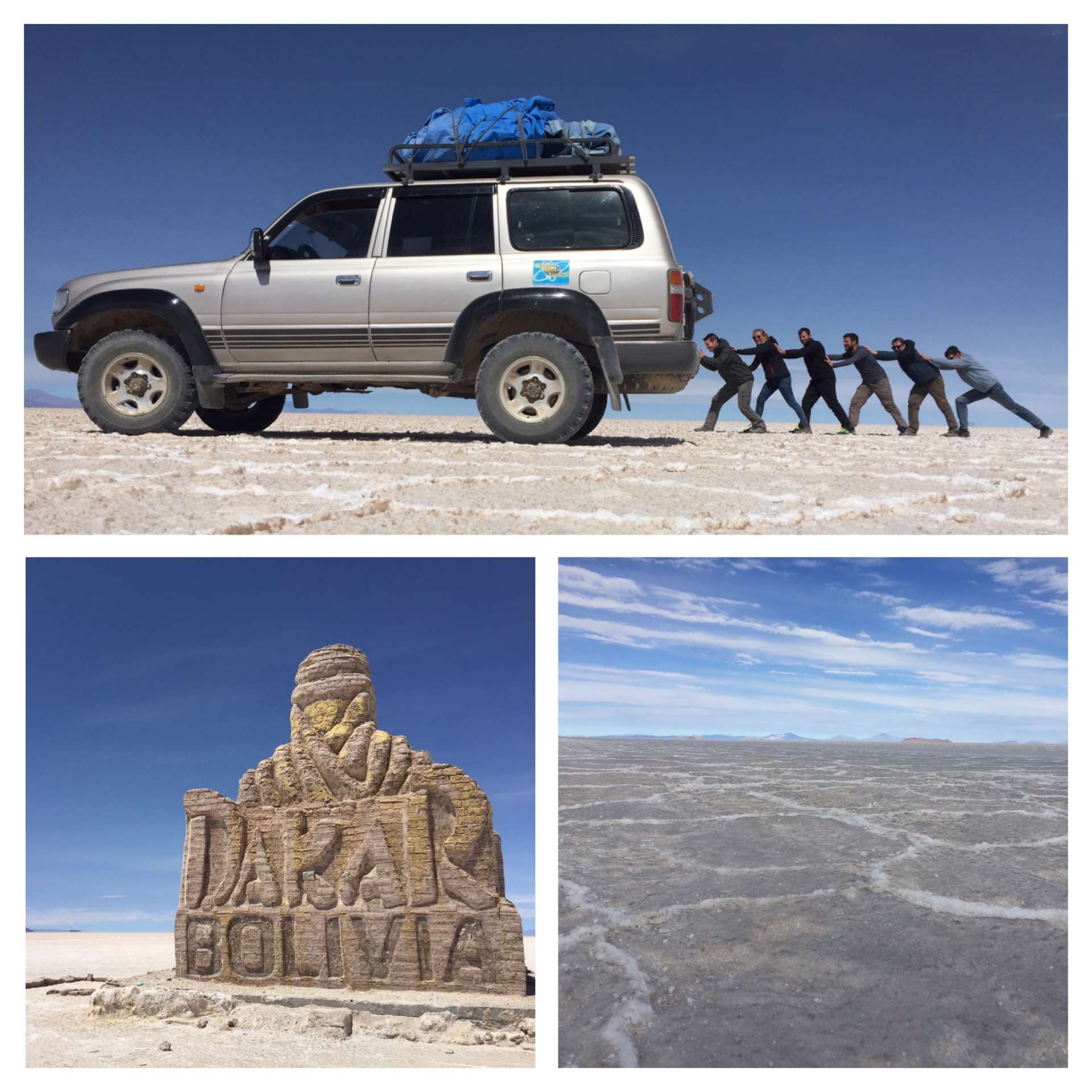
After that, we went to Colchani for lunch. This place is lined with stalls selling mainly alpaca products, such as alpaca scarves, gloves, sweaters, etc.
With a full stomach, we headed to our last destination - the 'Cementario de Trens' (Train Cemetery). Not an ordinary cemetery, though. Here, old extinct trains, wagons, goods wagons, old steam locomotives, and more are standing!
A very cool backdrop. Unfortunately, it's marred by piles of garbage lying around and rotting.
We took some final pictures here before heading to the company's office in Uyuni.
For me, this was the end. The journey continued for four of my companions. They were heading back to San Pedro de Atacama with an overnight stay along the way.
Before that, we had time to stock up on Bolivianos, explore the city of Uyuni, and have a final beer together before saying goodbye.
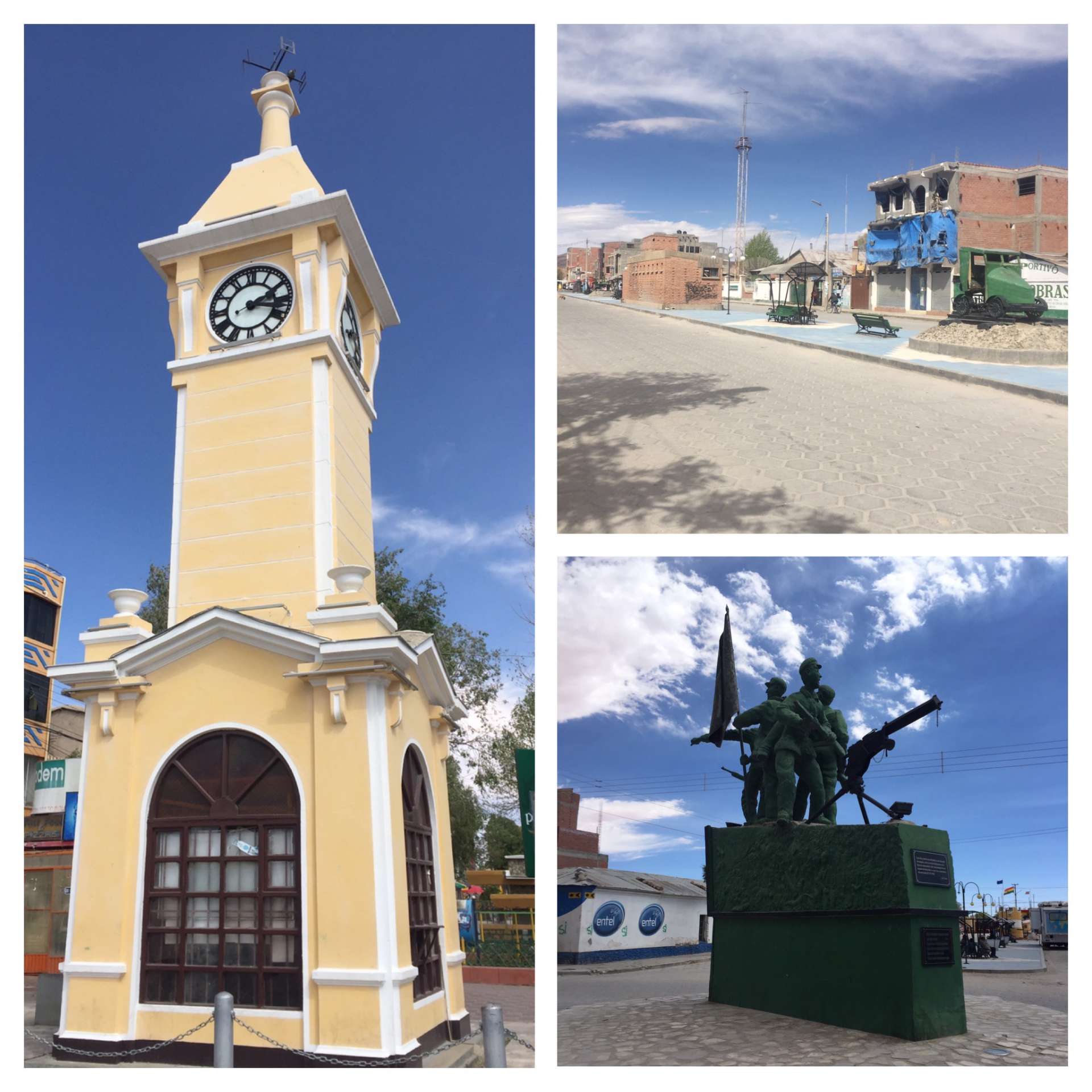
My journey continued to La Paz, heading north in Bolivia to the famous Lake Titicaca!
Subscribe to Newsletter
Answer
